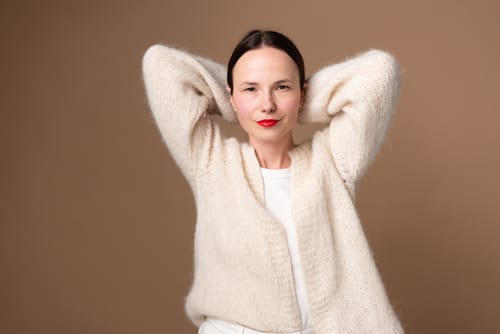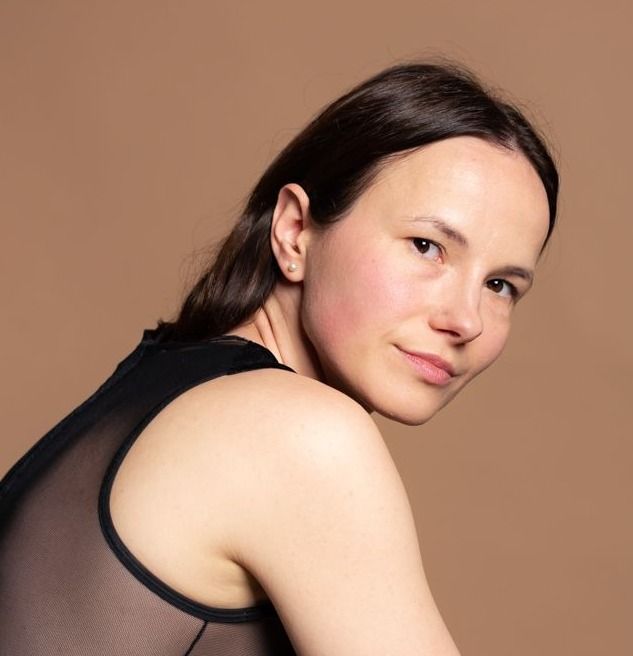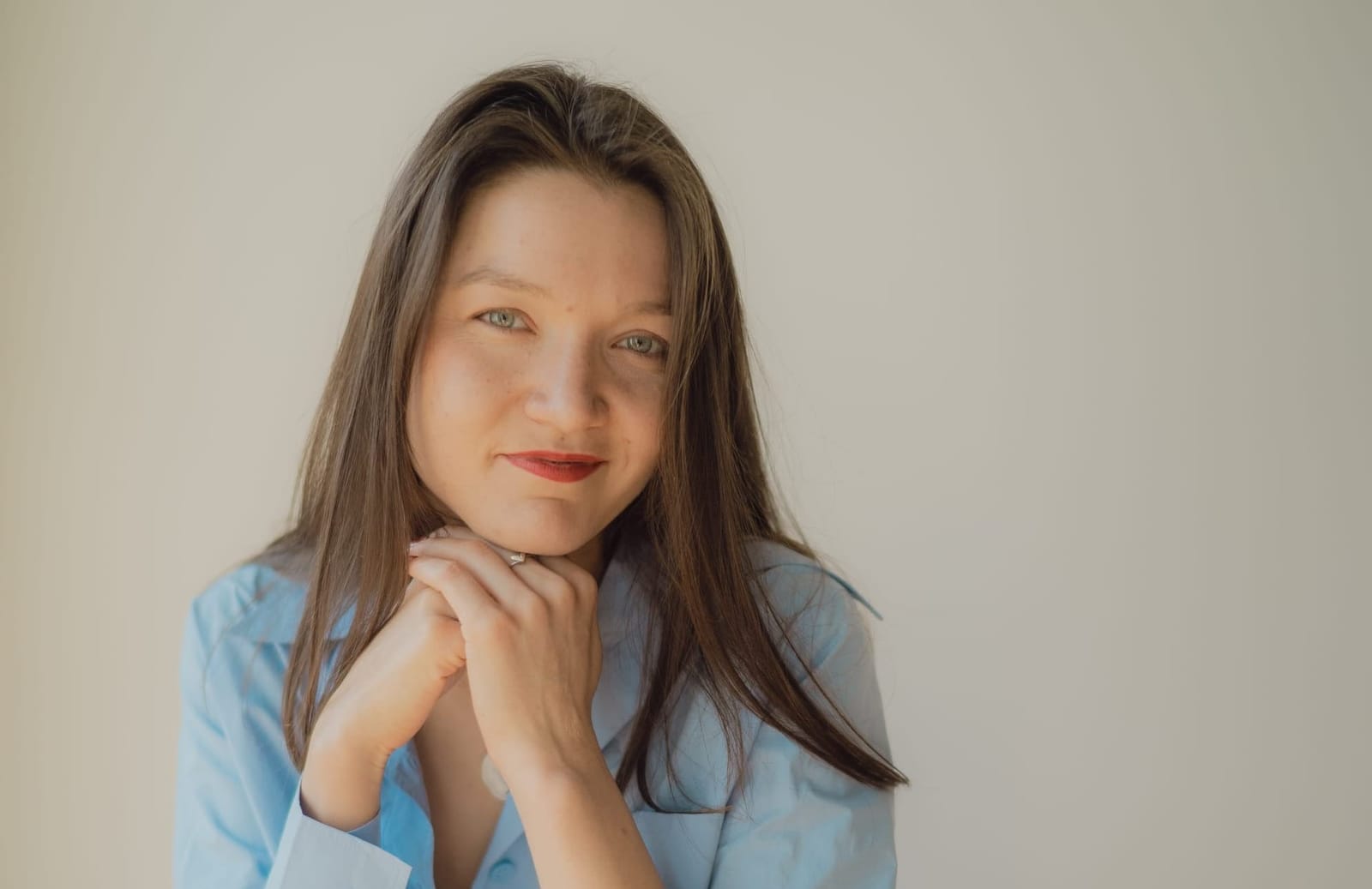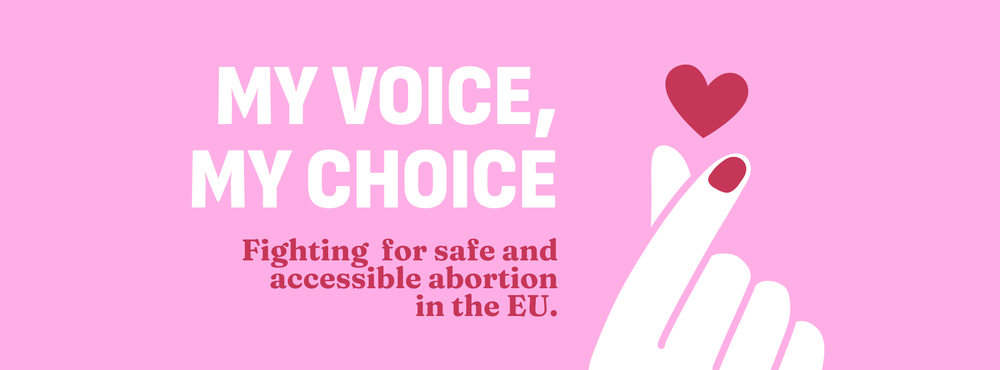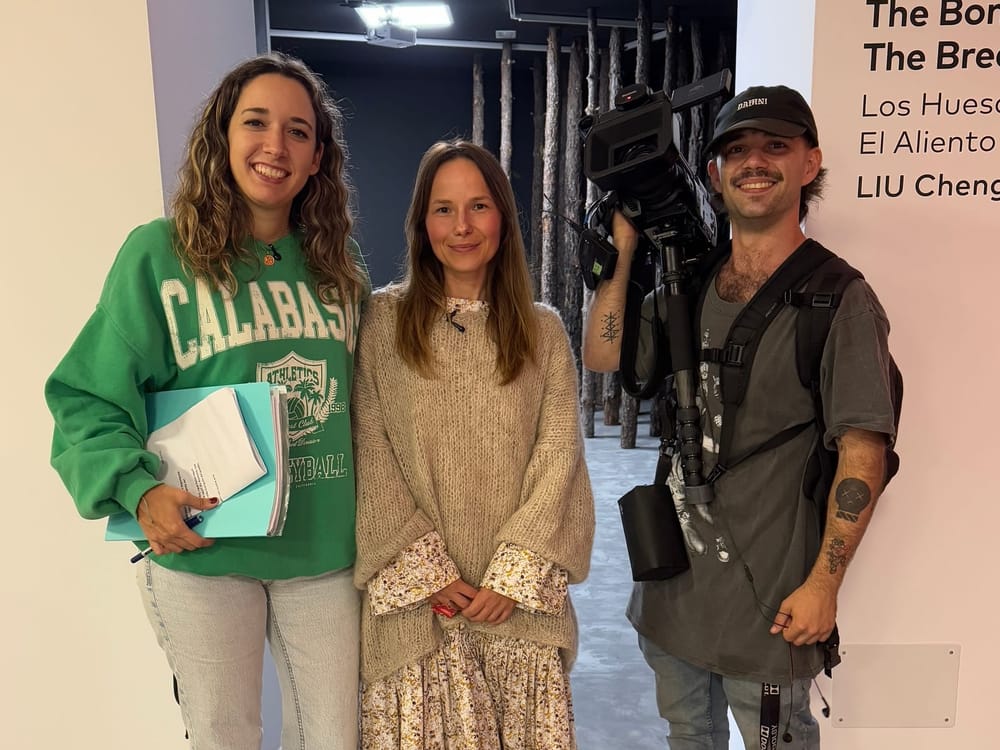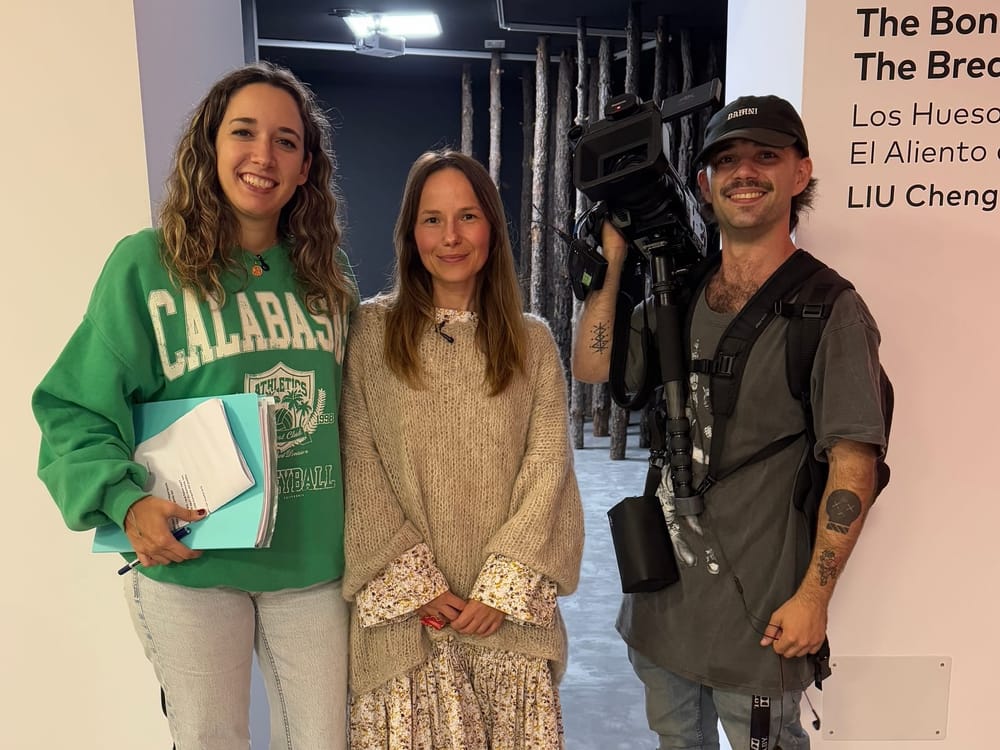My interview with Ana is here to be read and loved. I therefore encourage you to draw inspiration from the incredible world that Ana has created because it almost seems magical and surreal in its depth and beauty. Ana is truly remarkable, and this article is among the most outstanding, intricate, and profound I have ever written. I am quite humbled.
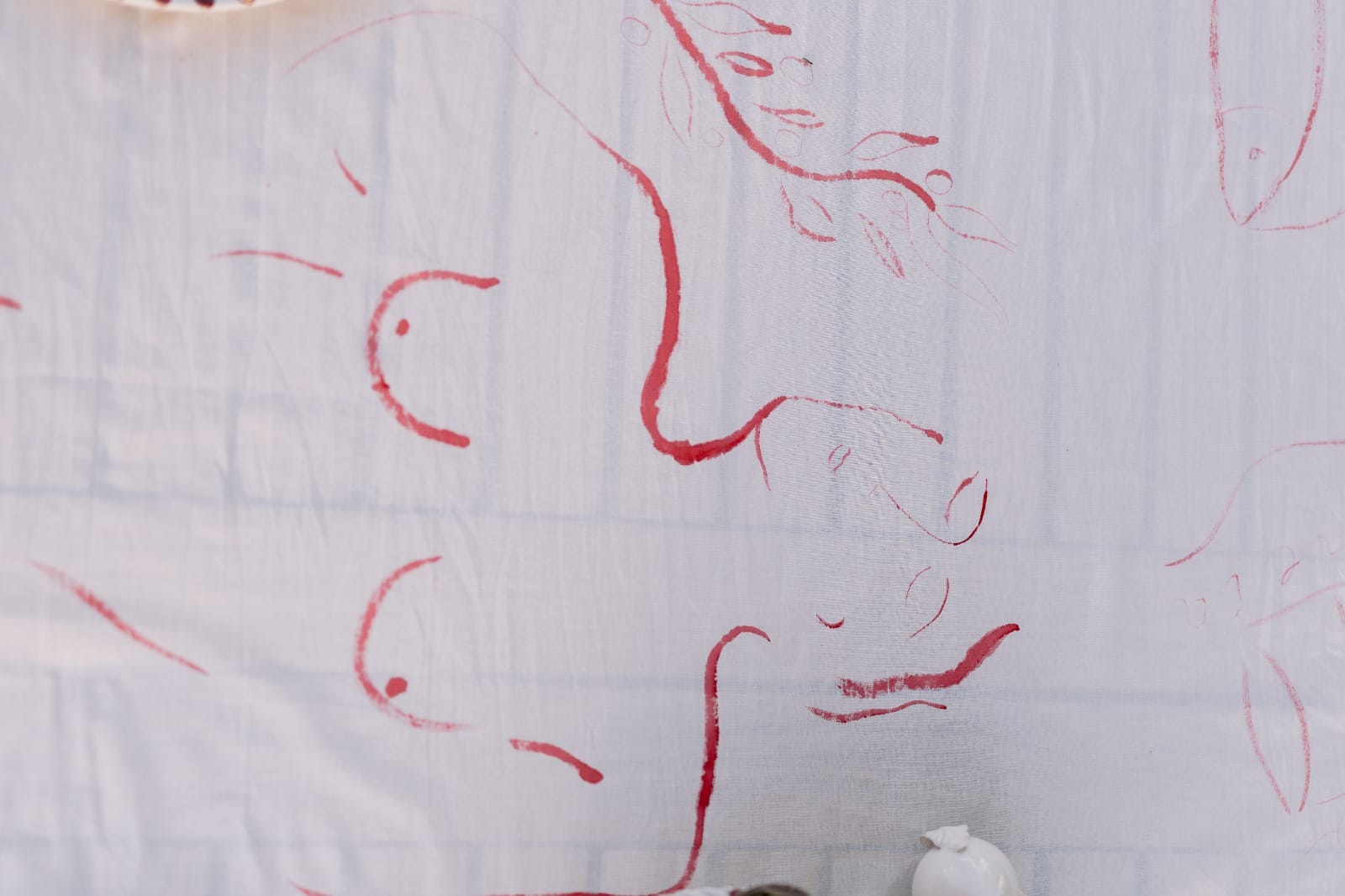
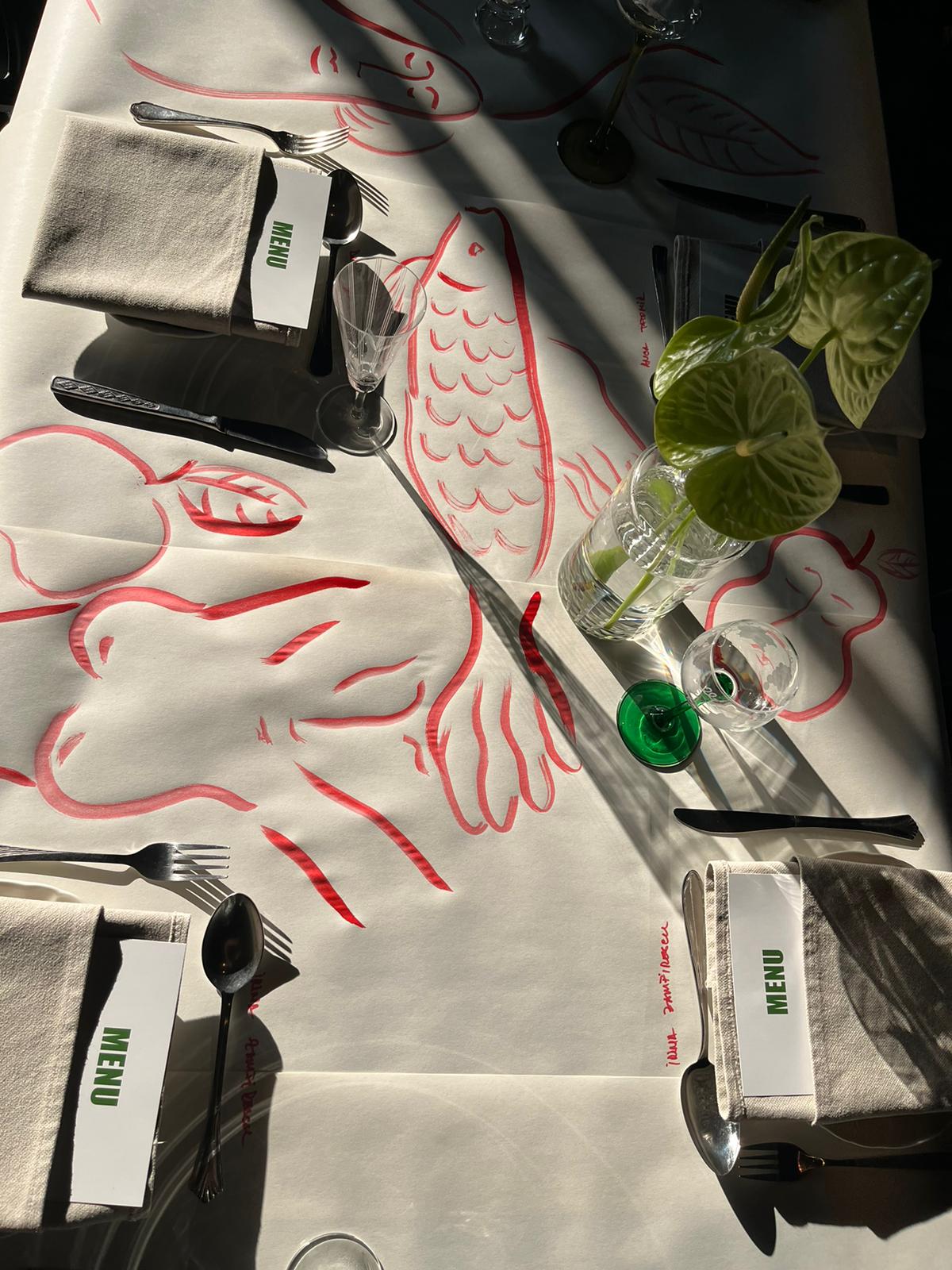
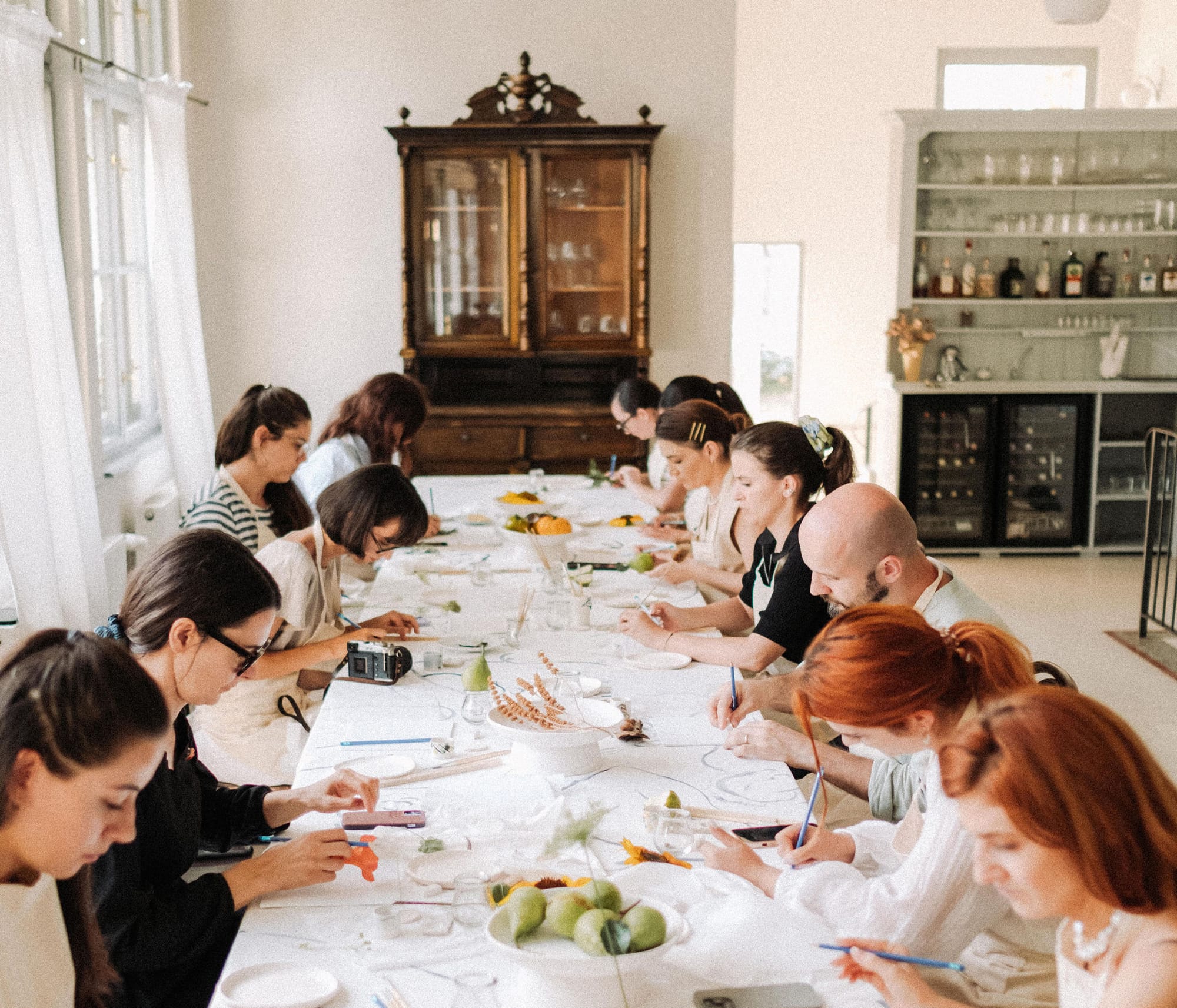

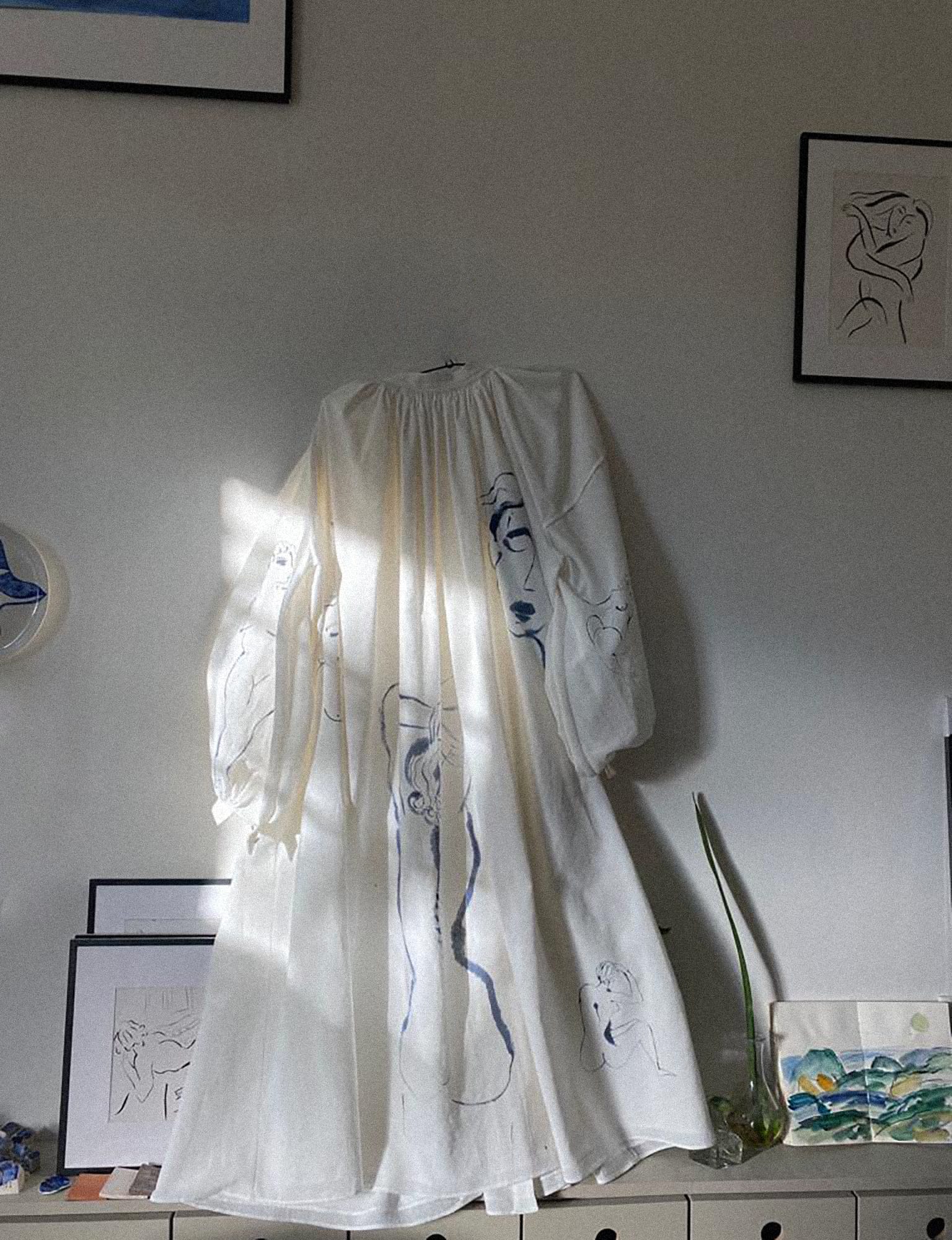
Who was Ana Gurduza as a child, and when did her passion, drive, and artistic talent emerge?
As a child, I dreamed of having a semiobscure wooden attic with skylights facing green trees, a place filled with unusual objects, a museum-like collection between memory and dreaming, where I could paint. This path has now become my studio, a dreamlike space for creation.
My grandfather was a wood craftsman, an art teacher, and an observer of the world. His children, including my father, drew, but for none of them, drawing became a life's pursuit. I aspire to believe that my generation's inherited talent blossoms through me, shaping me into a creator of images and narratives. My family supported me on this path, as well as my deviations from it.


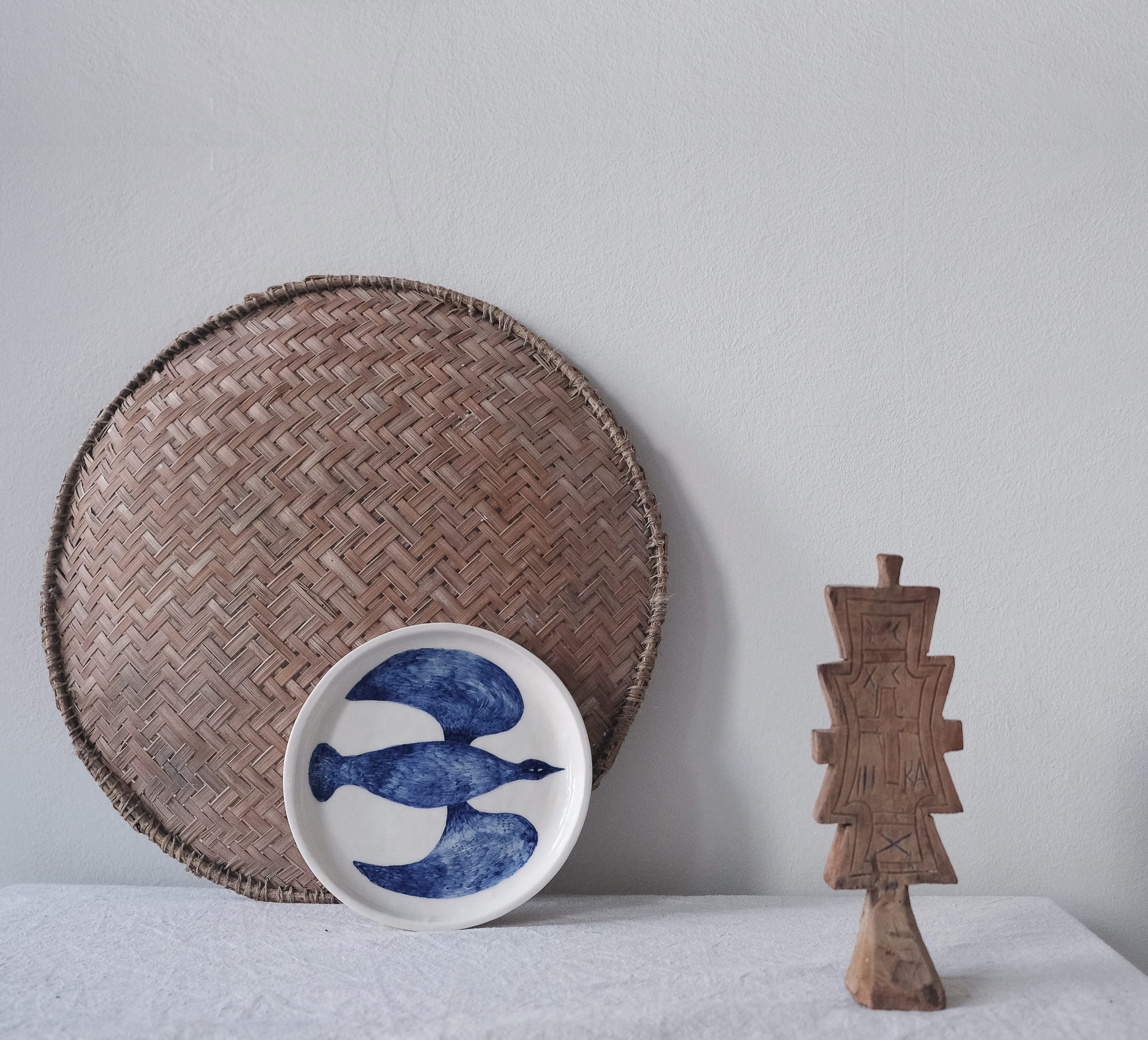
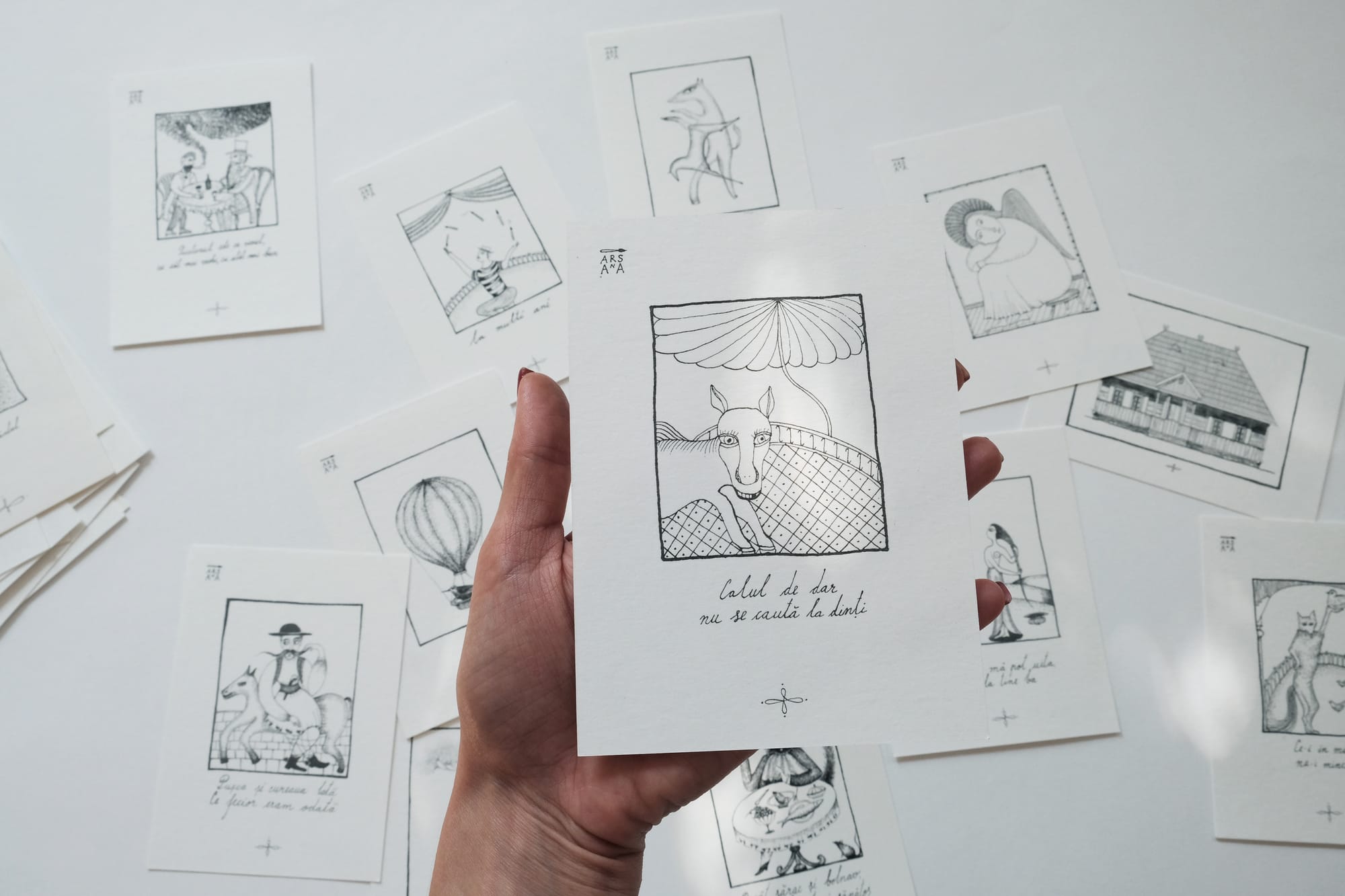
As a child, I studied painting and literature in the privacy of my home in the Republic of Moldova, where I developed my hand, eye, and sensitivity. I was a child who loved to read and draw; this was my intimate refuge. I studied painting at the Valeriu Poliakov School of Arts in Chișinău, then almost completely stopped painting for ten years, a severe break that I couldn't understand at the time. The fear of imitation was there.
The call to manual labour and images never ceased to torment me, and I had to follow it, like a lost paradise I longed for without even knowing it. When I founded my own studio, I felt peace, courage, faith, satisfaction, and restlessness to do and to be. I know I found my place and purpose, which I can carry for a lifetime.
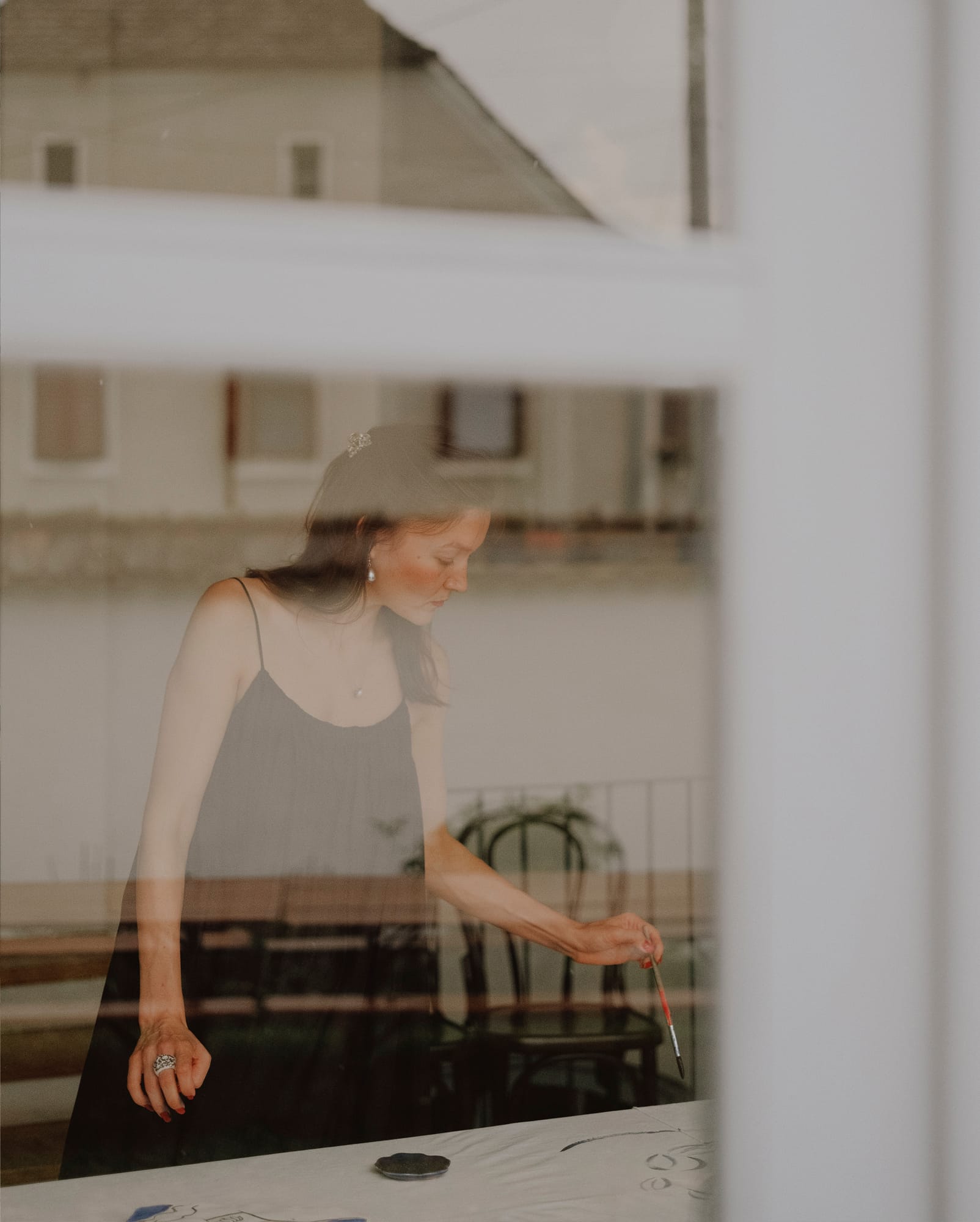

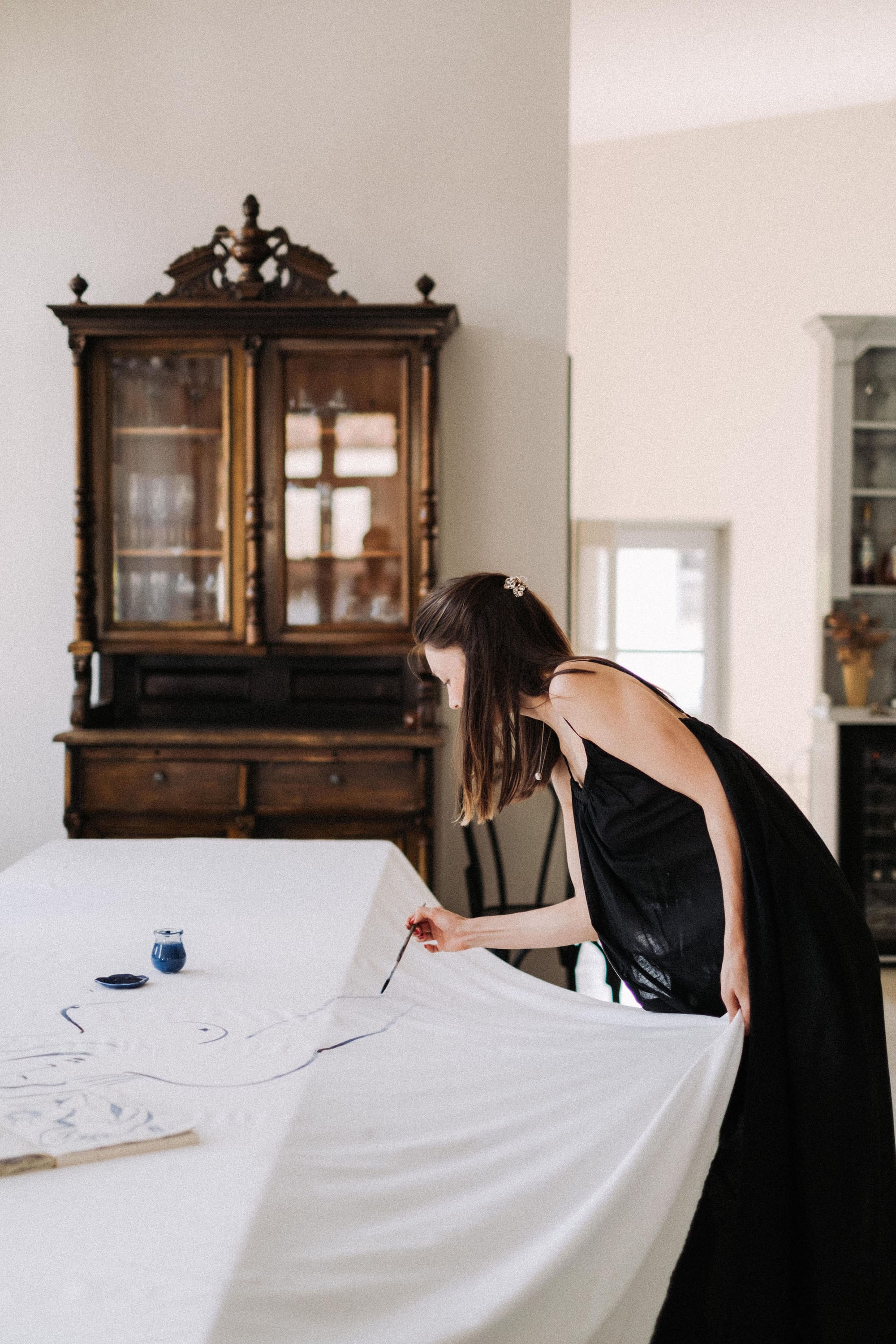
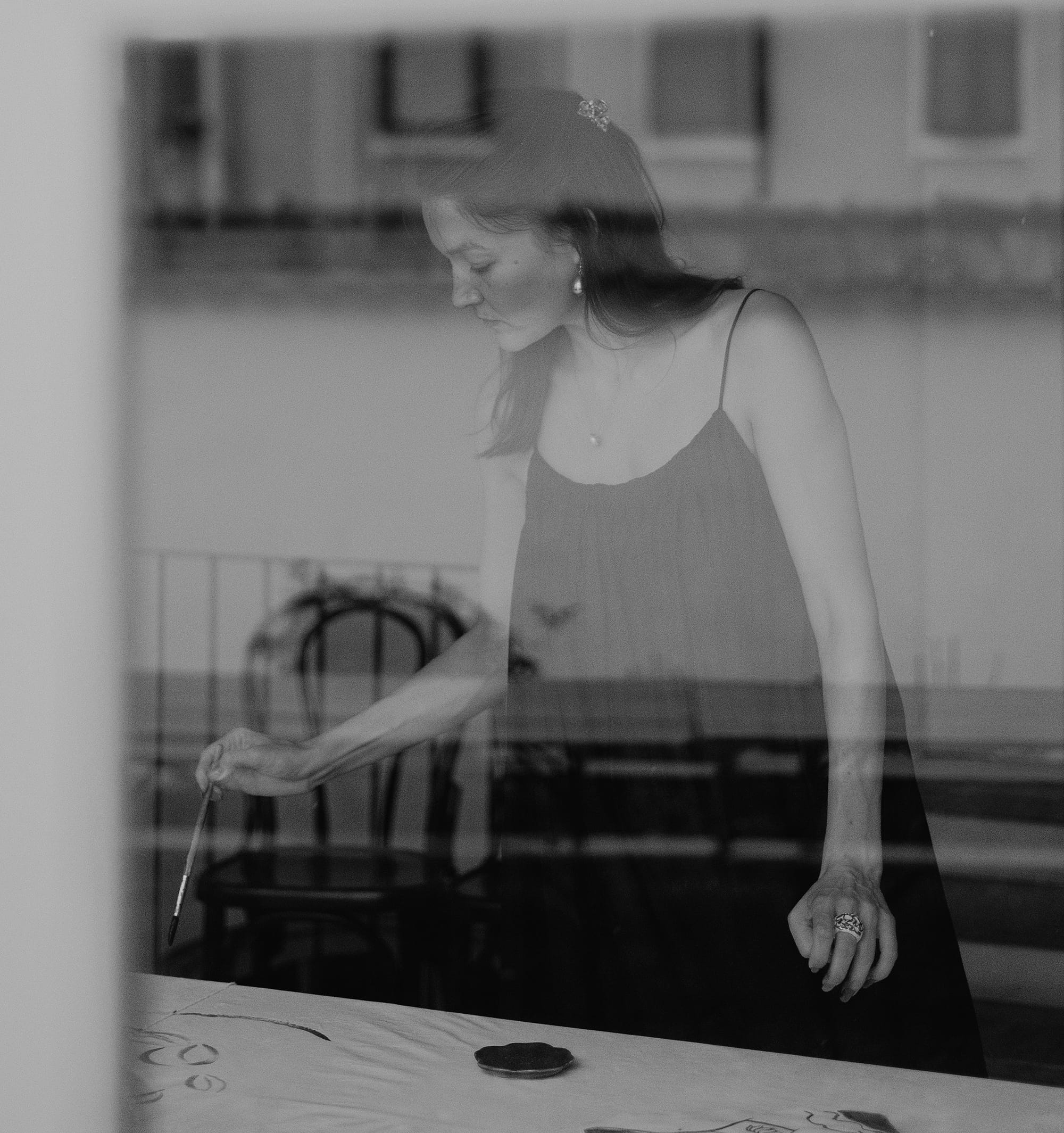
Photos: Andreea Mitran, Fascicul Visuals
I loved something I read on your site, www.arsana.art. The poetry of being. The aim is to learn, practice, and preach the immortal value of the invisible. Is this the core of your work?
This sentence encompasses a wide range of my beliefs about the role and power of art, as well as my mission. I am an ongoing student, both in the face of the miracle of life and in relation to art. I wish, in the not-too-distant future, to be able to pass over what I have learned and absorbed throughout my life, remaining a student of life and a practitioner of art.
I dream of a school about beauty, colour, form, and abstraction. It has the driving force to overcome reality and build an imaginary reality, which becomes the construction of our beliefs. Through the prism of these beliefs, we manifest ourselves in the world. Imagine how the knowledge that there is a life beyond life has changed the way mankind lives for thousands of years. It is a power that man has and that other beings do not.
Otherwise, art tells us an invisible truth; it is a chronicle of the evolution of the human soul. If a history book could explain the causes of war, the legacy of munitions, and the treaties of war and peace, it would not be able to delve into the soul motives that led a nation to follow a leader who committed murder.

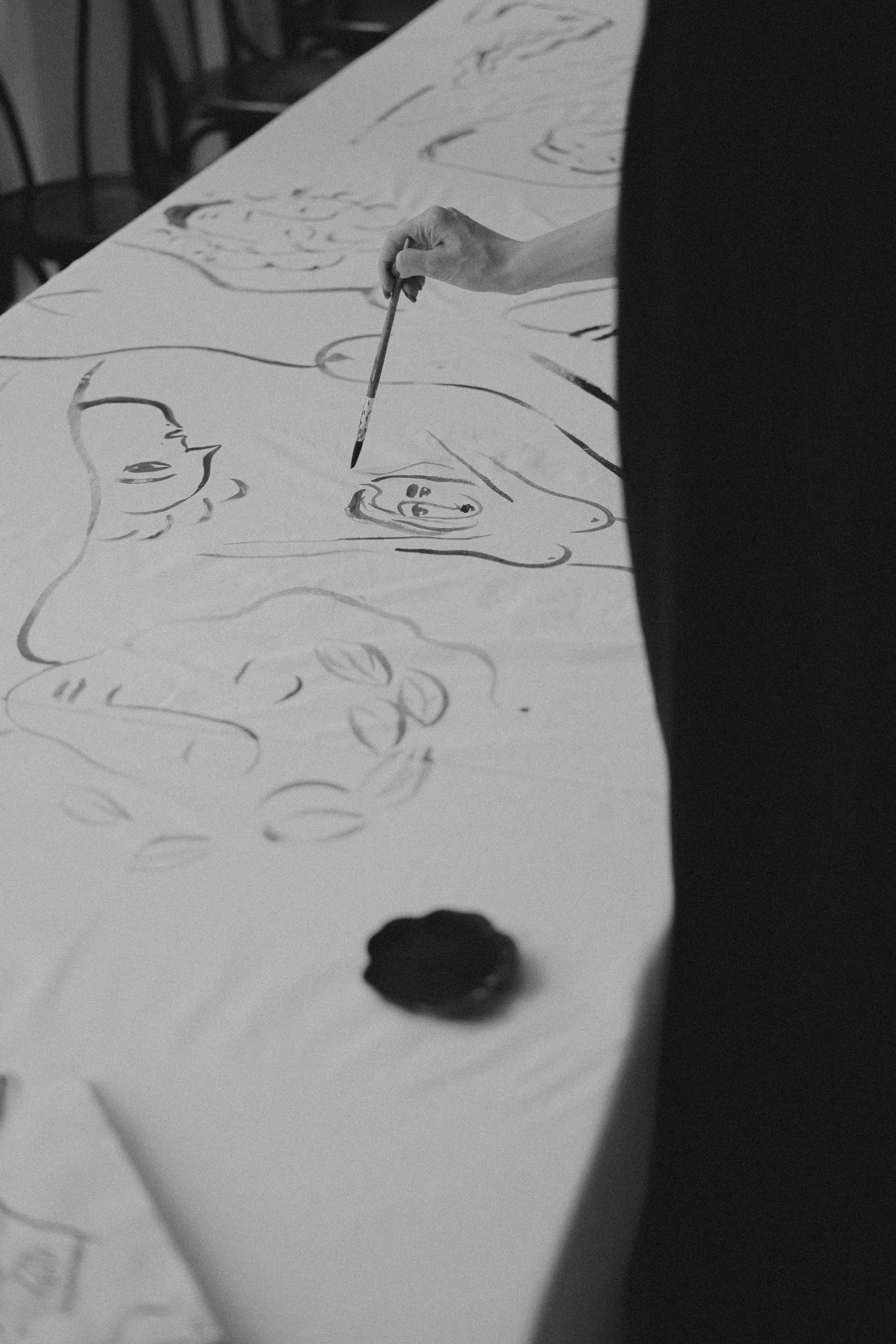
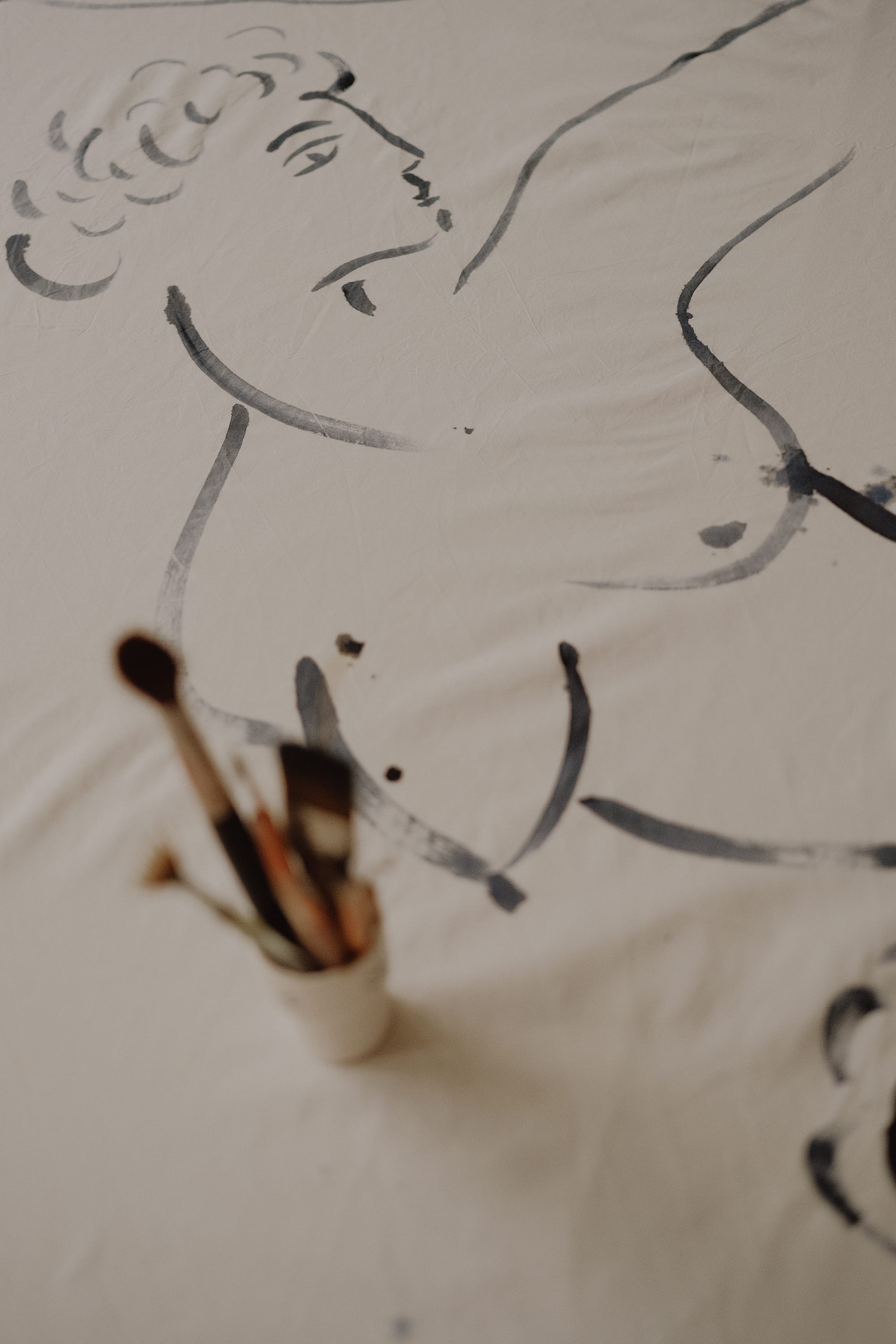
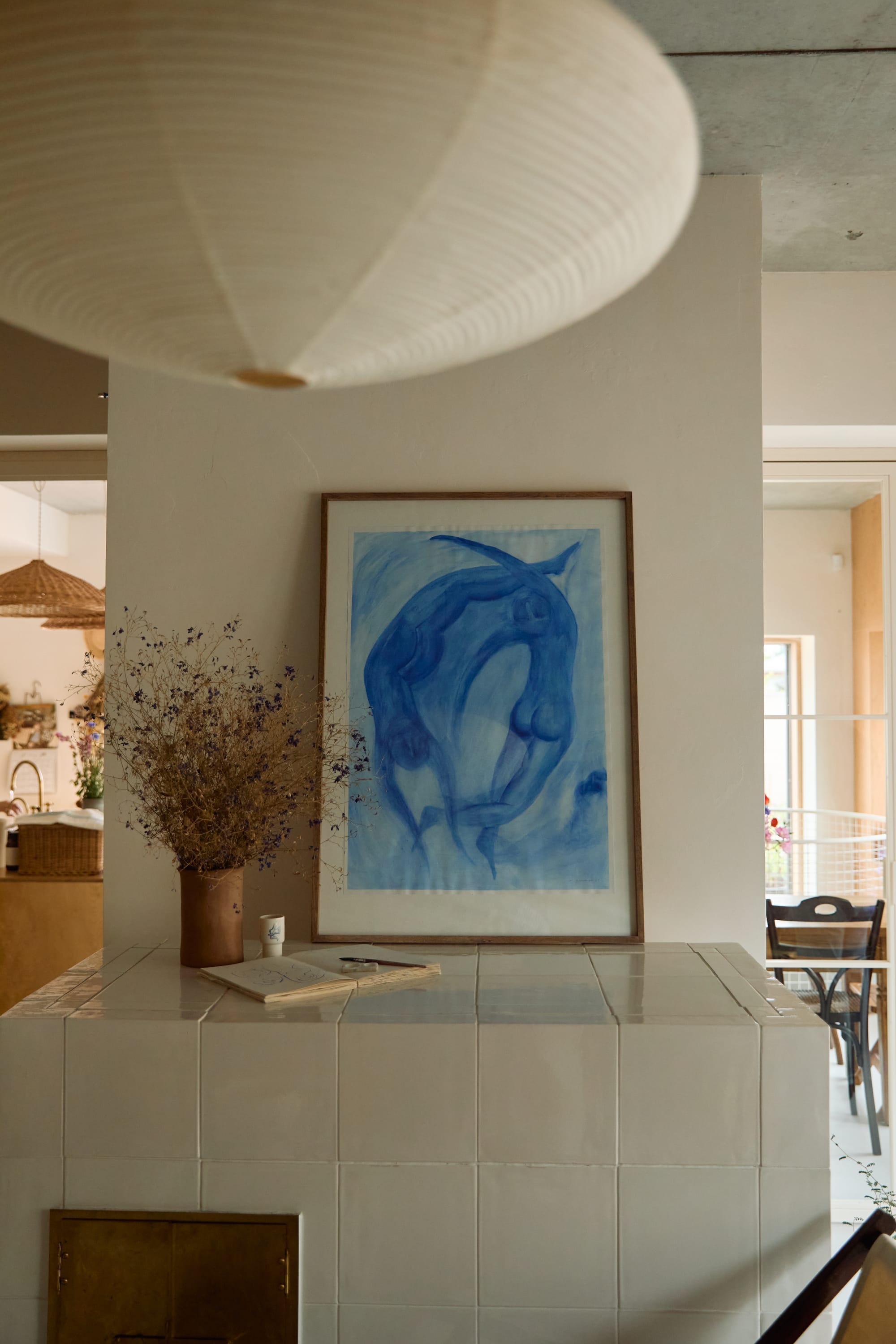
Photos: Andreea Mitran, Fascicul Visuals
Only art can, through surgical operations of the spirit, speak of the aspiration to good or bad beauty. If you want to know the truth about 19th-century England, ask Dickens. If you're interested in learning about the medieval era, consult Giotto, and if you're interested in learning about the Greeks, turn to Sophocles. This heritage is not an object; it has a privileged status as the artefact of the generations that will follow it, about the strength of faith in an invisible imaginary.
I would say that art, in addition to philosophy and religion, is the gate opener to the transcendent. Through it, we know the invisible. It starts with the appearance of the word; art is the word. Through it, we traverse the unseen gods of past and future, the rivers of youth without old age and life without death.
Through art, we overcome our own condition, the biological one, and learn the imaginary. We recreate worlds and futures in which we strongly believe; this belief guides our present. This is the power of art. It transposes into reality with a striking force, the imaginary, ideas, dreams, concepts, and prophecies.
An artwork is not placed in time; it breaks boundaries and speaks of something we contain within us. This transcendence of immediate reality and the construction of a second reality is the manifestation of the invisible and of art.

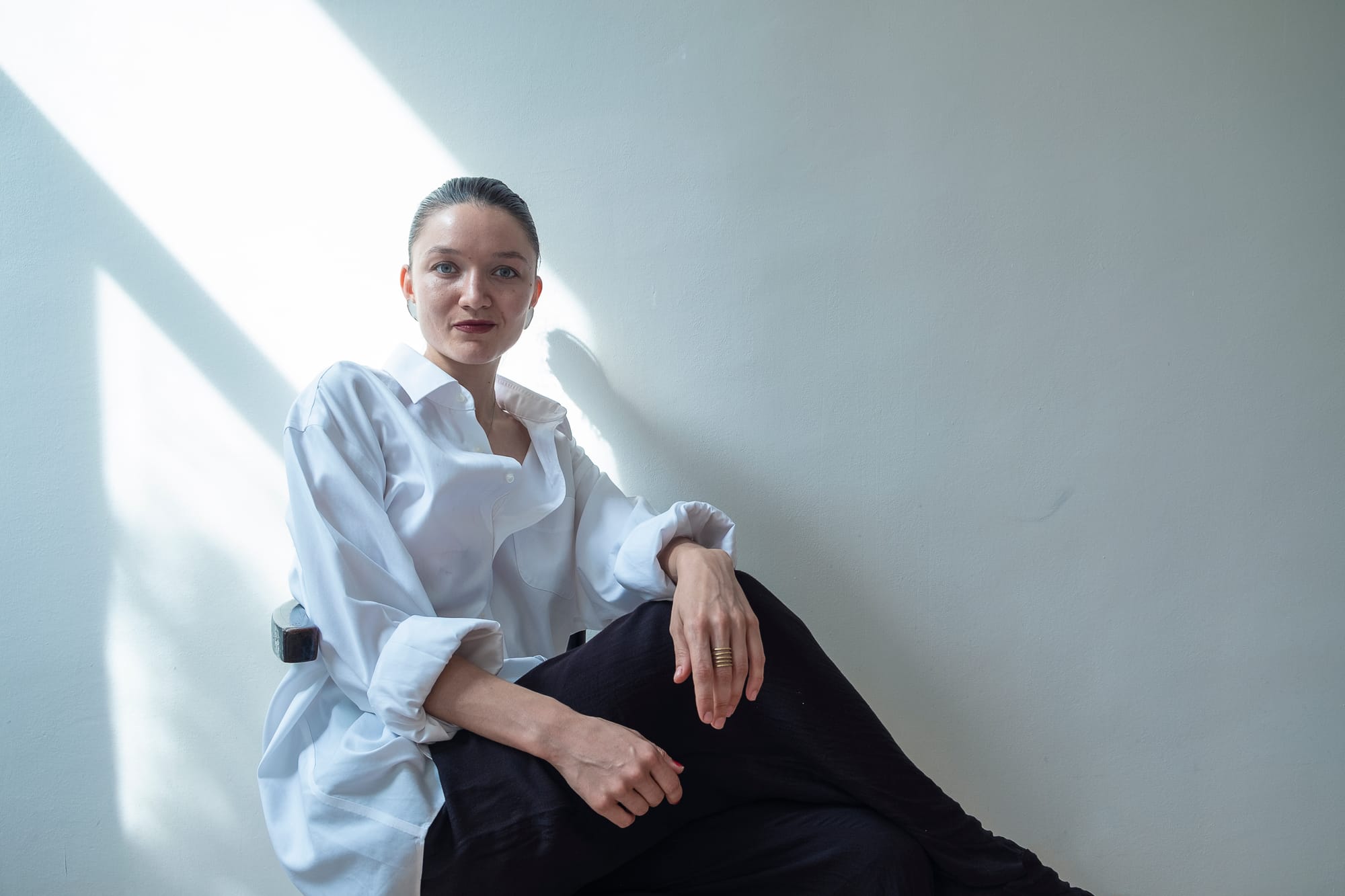
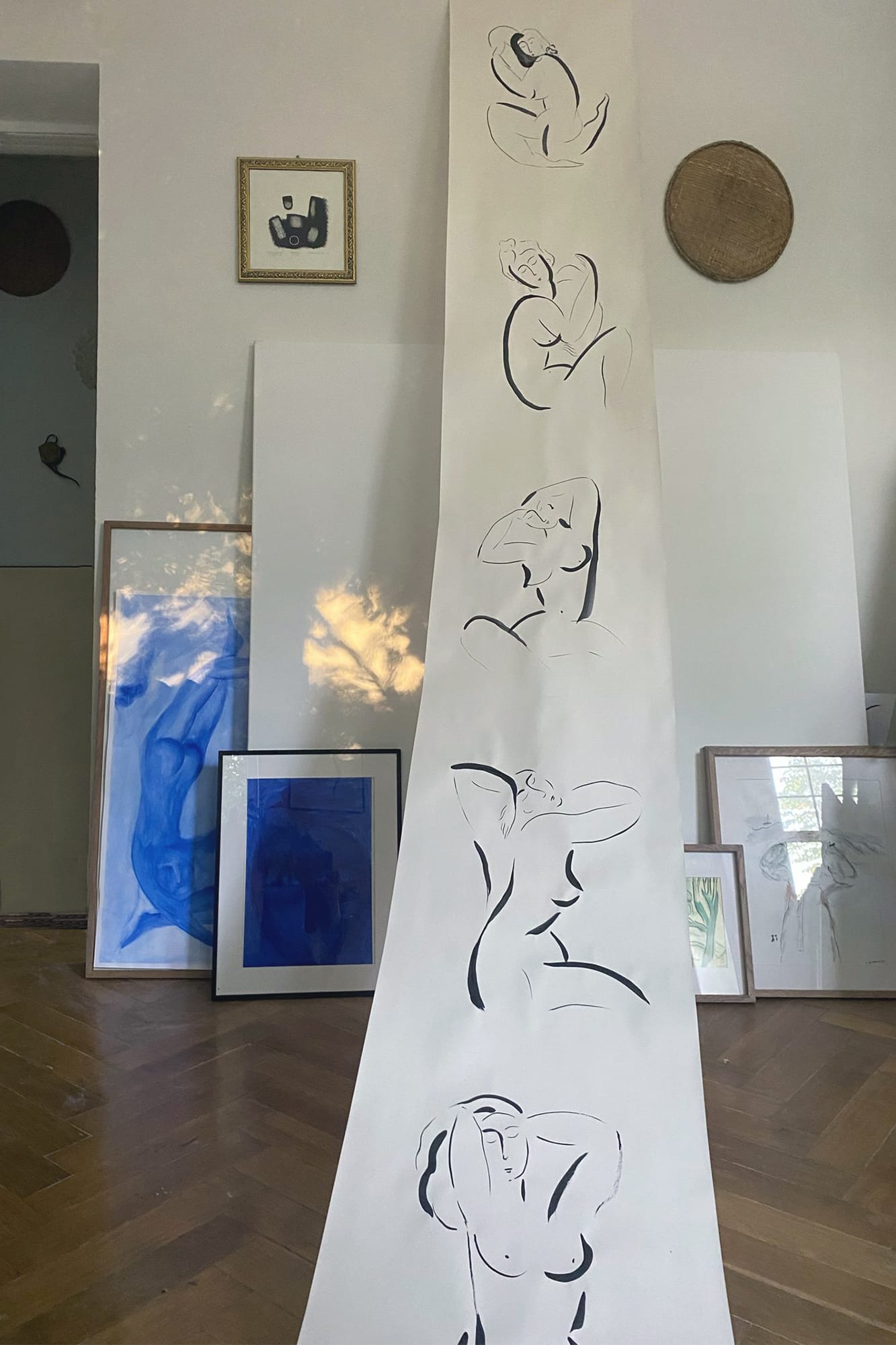
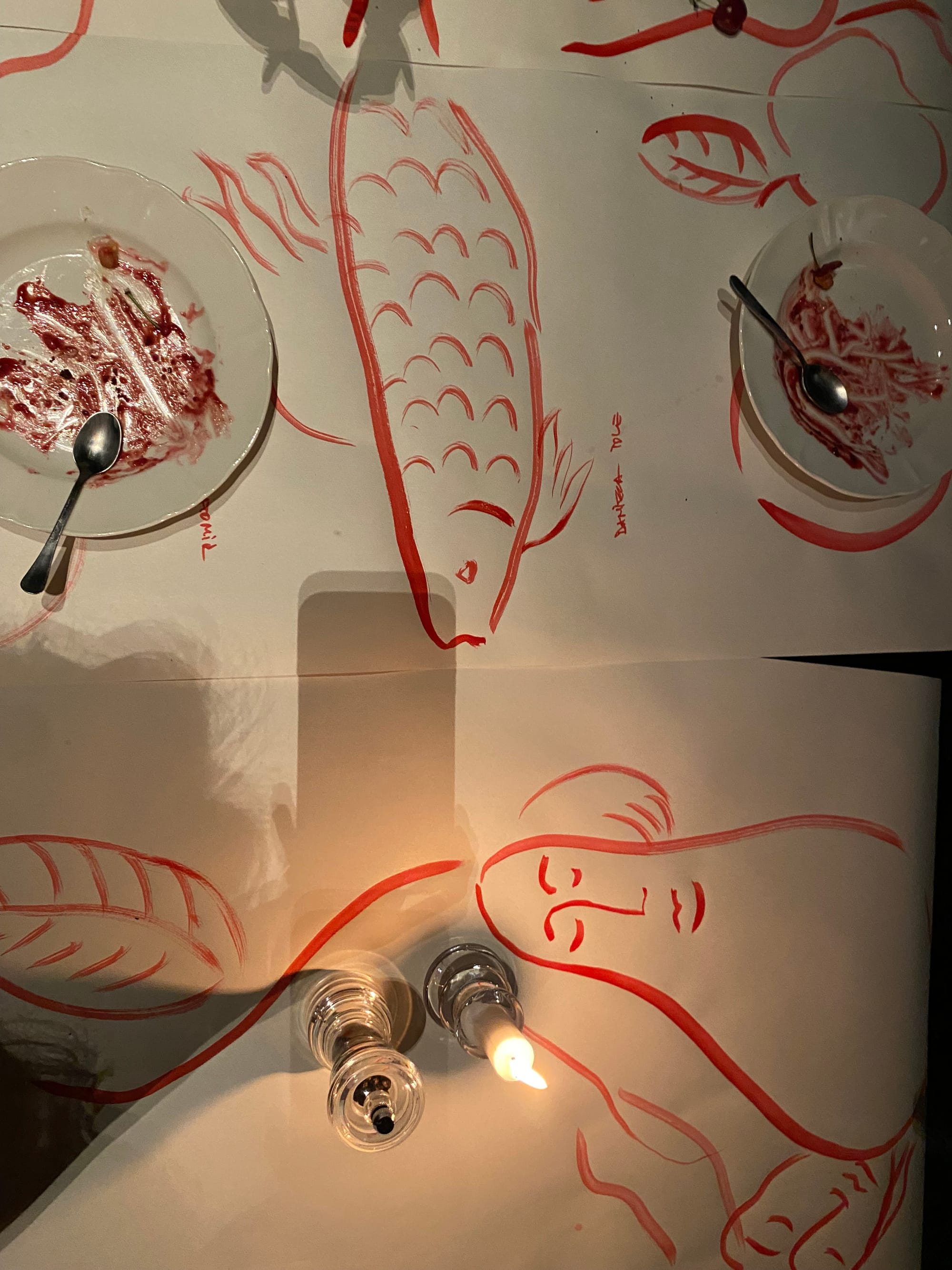
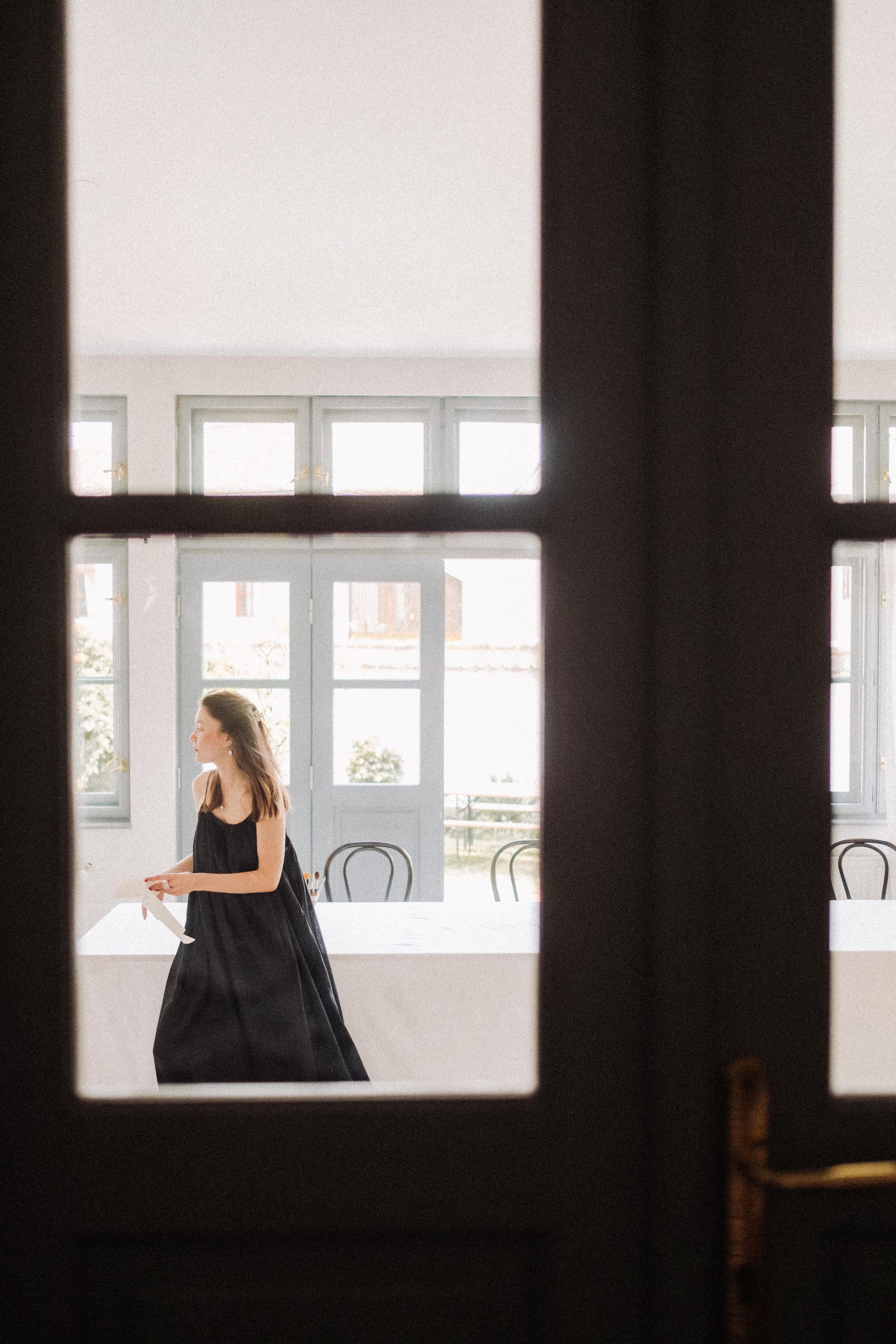

I couldn't help but notice how sublime blue hues enhance your artistic world. Why this particular colour?
My heart loves blue.
This colour has a special story. Due to its rarity in nature, blue has a shorter history than the other colours. Blue belonged to something volatile and unattainable, like the sky and the sea, both unfathomable.
The Egyptians used the dust from the Lapis lazuli (heaven stone), a stone that only arrived in Europe (Italy) during the Middle Ages. Being the most expensive and fine pigment, brought precisely from the region of Afghanistan (this is where the name ultramarine comes from, i.e., the pigment brought from overseas), it was used for absolutely special elements, such as the mantle of the Virgin, Giotto's blue sky in the Basilica of Saint Francis in Assisi, or precious details that marked a special character.
In the early Renaissance, the Venetian church established a monopoly on blue, with strictures on where and how it could be used; it had become a symbol colour. It is the same blue that, given its preciousness, was used in the fresco seco technique, that is, as a later layer added over the raw fresco, which caused the deterioration of the blue (and gold) pigment on mediaeval frescoes.
Today, we cannot imagine a world without blue, in gradients and shades. I bring the same eulogy to the symbol, colour, the sky, walking upwards through the especially deep blue of cobalt oxide.
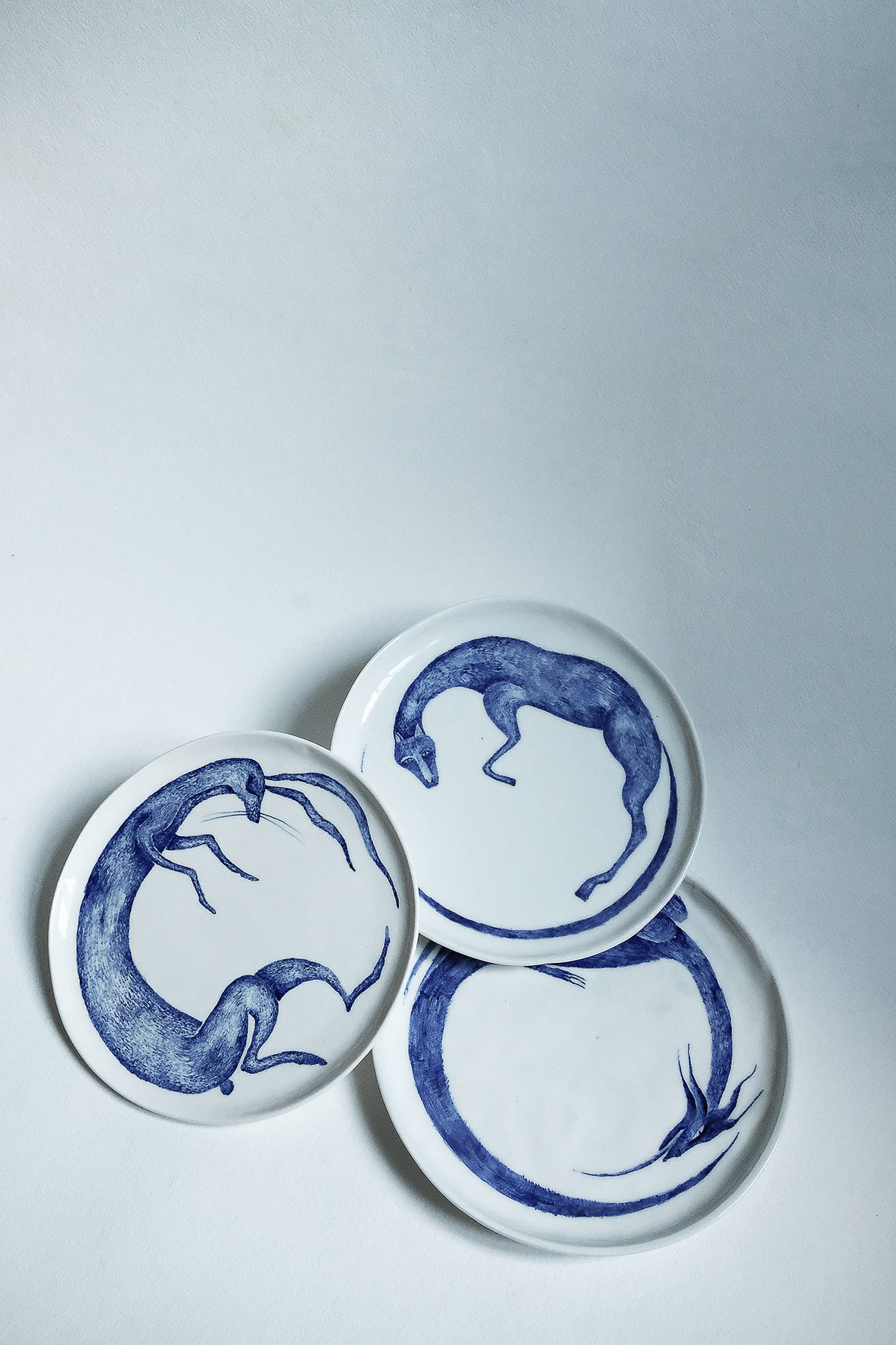
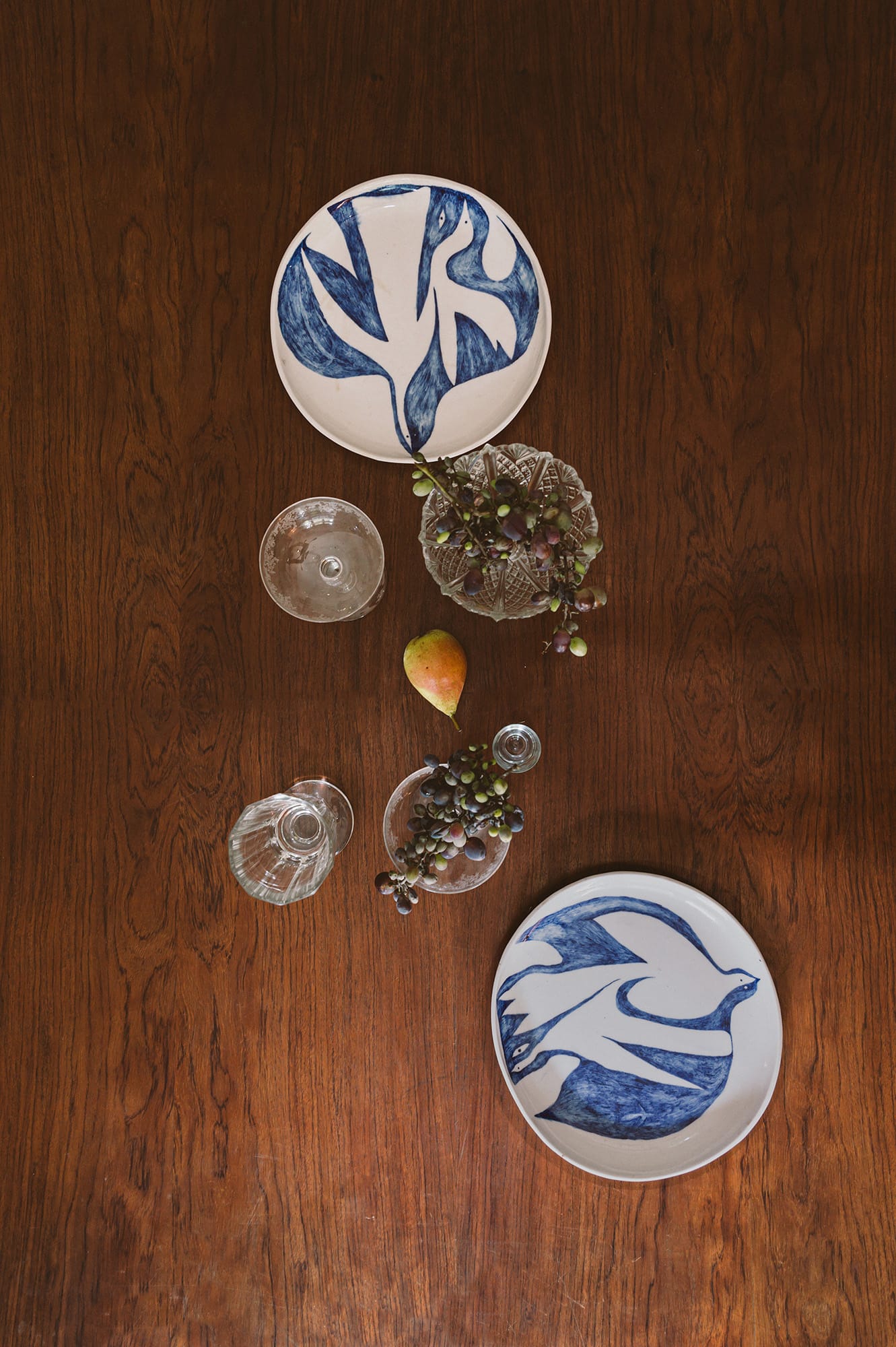
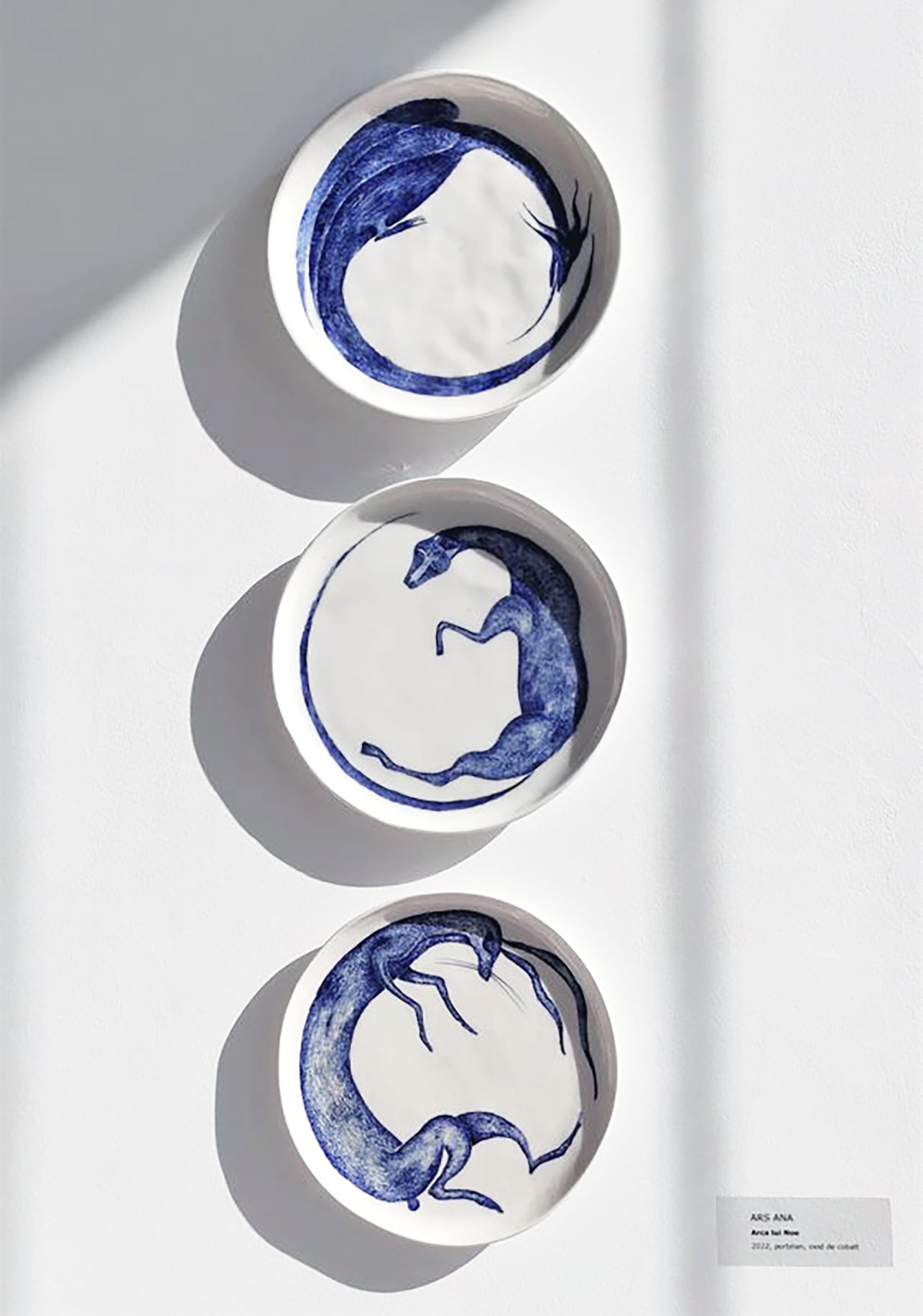
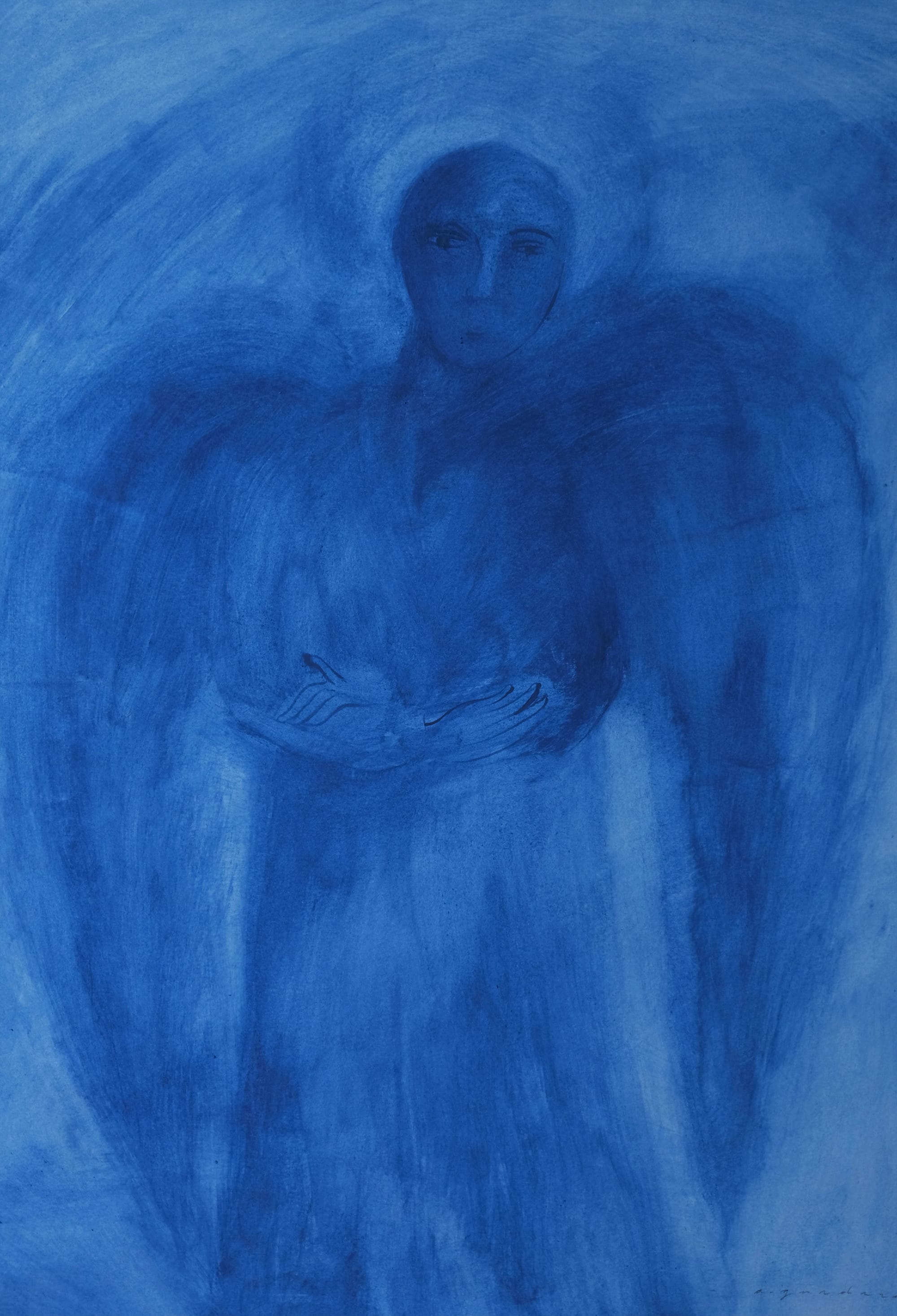
And why the invitation, Let's sail together?
It is an invitation to get in the boat with me. It’s an invitation to depart from the solid, secure ground and venture into the unknown, where you will find yourself transformed into a new individual. A traveller never returns the same; he is another person after a journey. I need to express myself as a traveller in his dream of weaving beauty and play, but I don't do it out of a need to express my emotions, even if what I do contains them. However, my work is a gift to someone who can recognise and appreciate beauty.
My journey is also an invitation to discover new horizons, with the sails wide open. A language with its own vocabulary where letters are colours, shapes, proportions, framing, lines, dynamics, and depth.
I am learning this alphabet so that I can speak the language of feelings and convey them, not just pour them out into the world. Through this inward journey, I hope to purify its forms and become more expressive, allowing my feelings to transcend from the individual to the universal human experience and resonate with others.
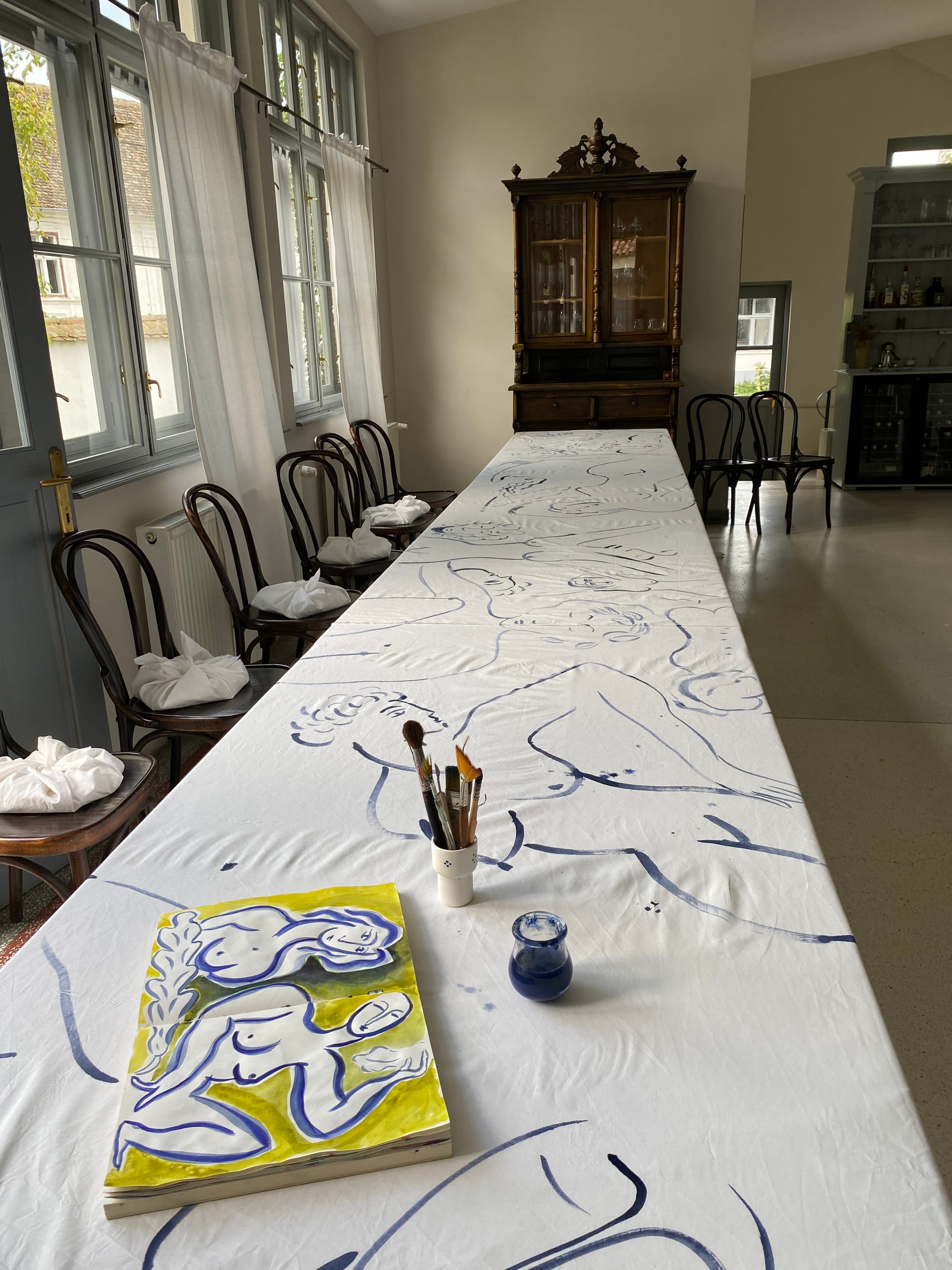
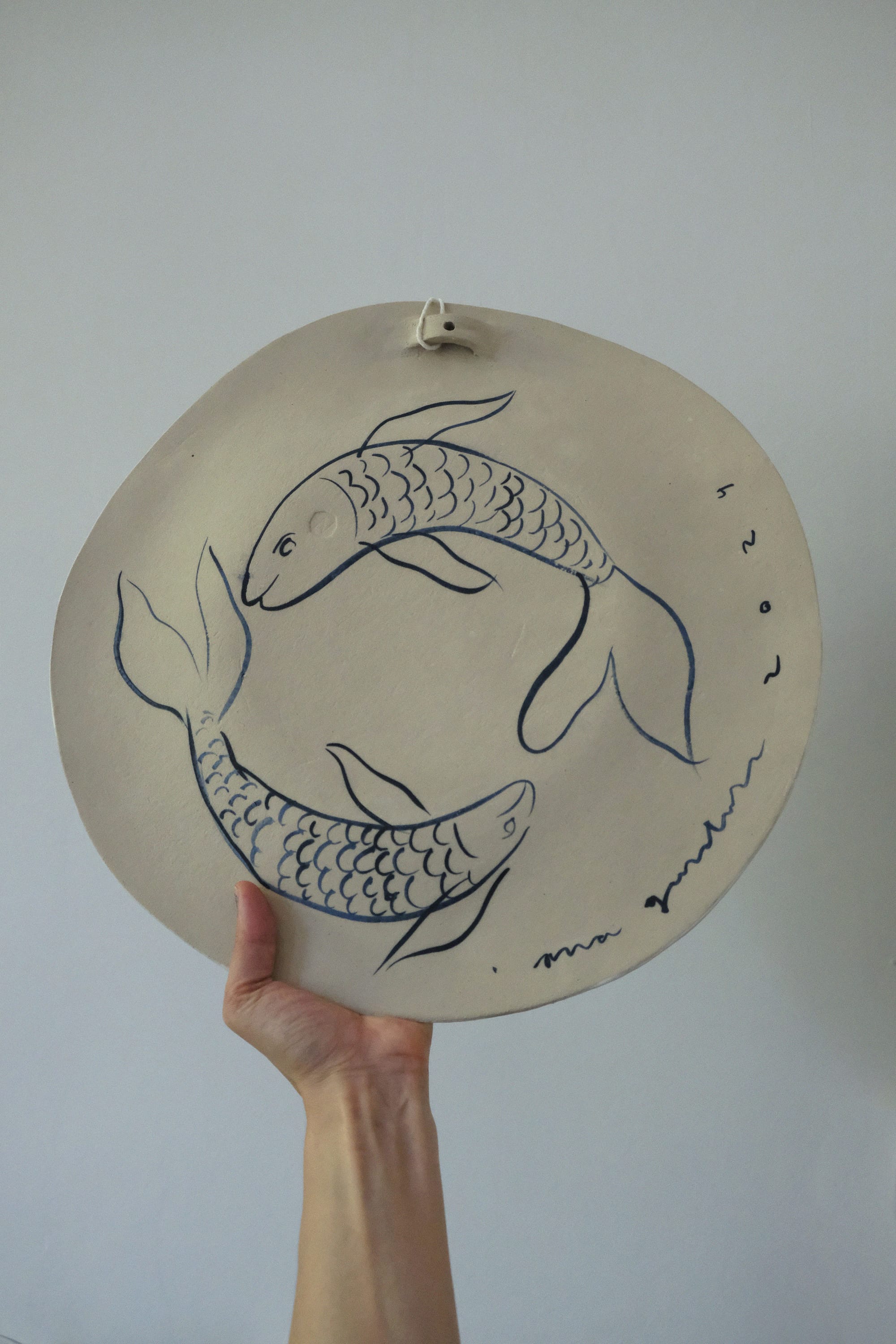
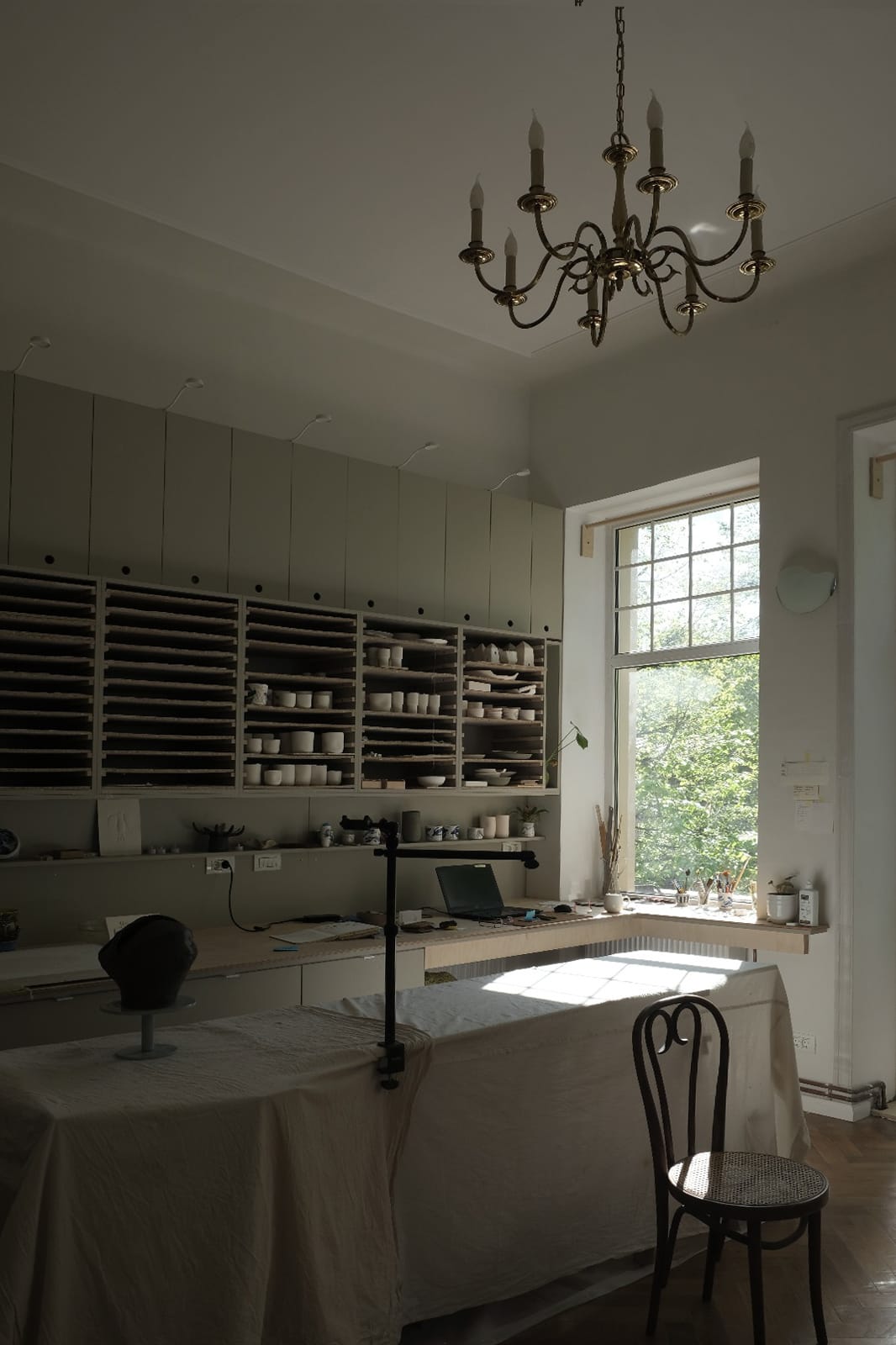
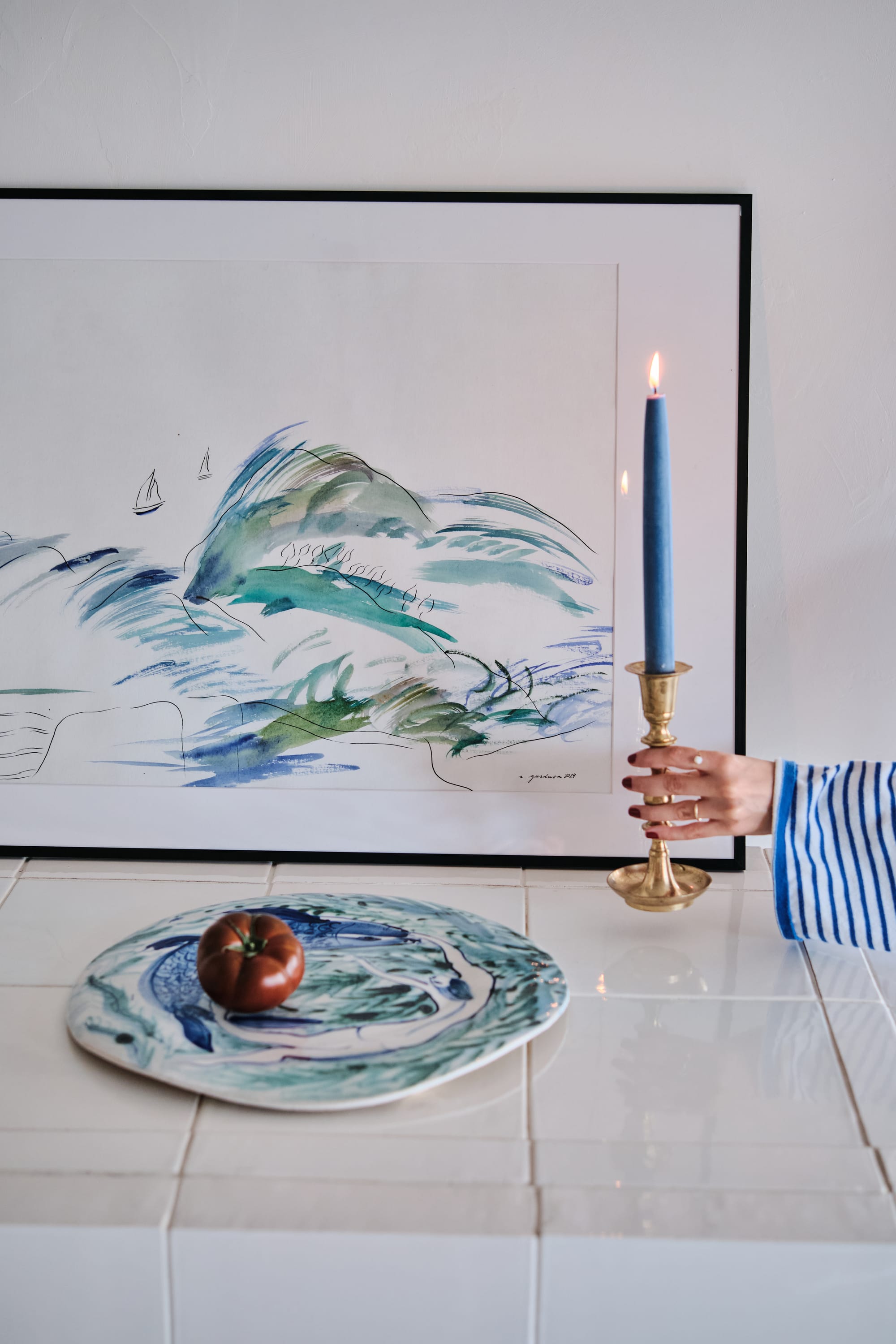
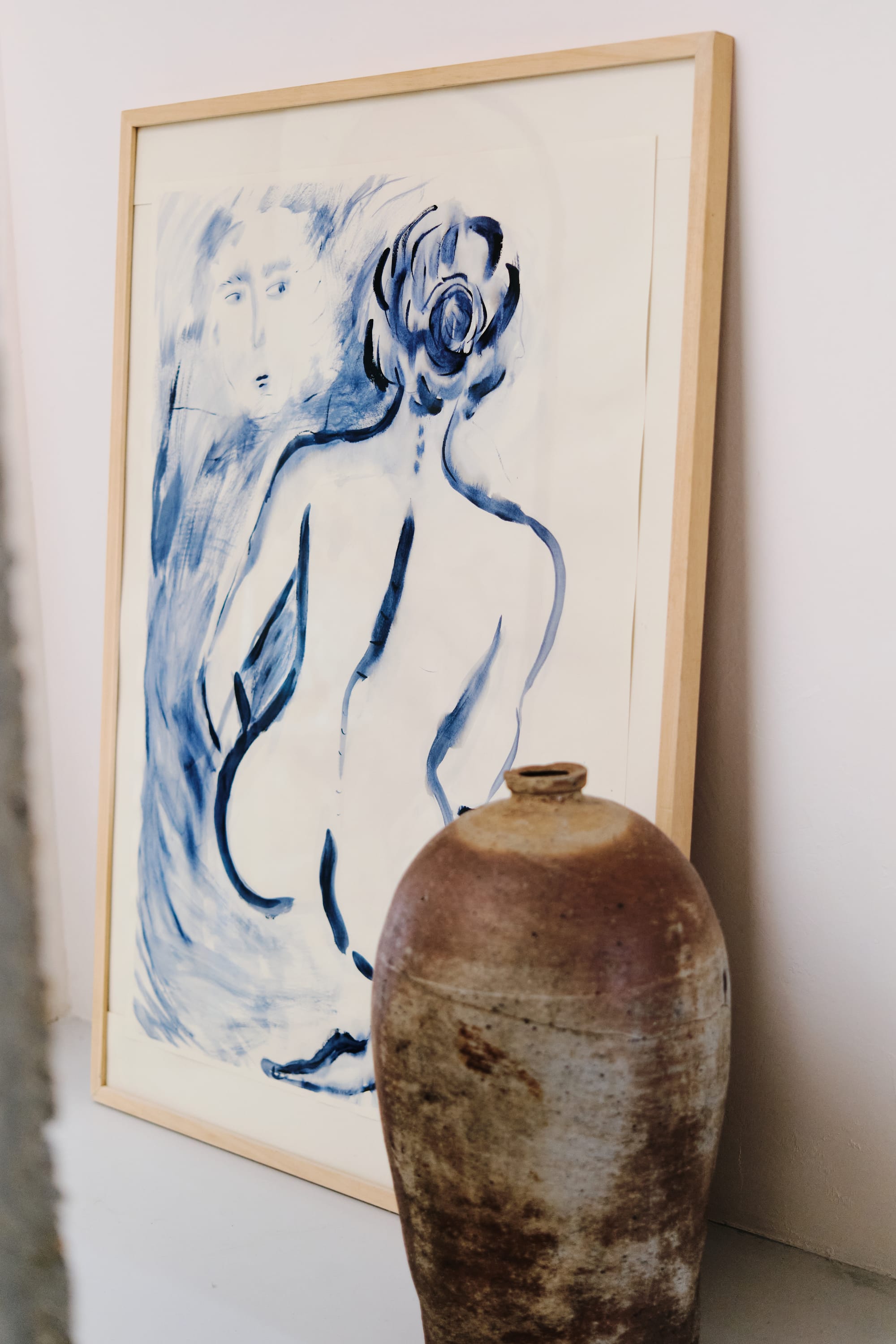
Photos 4 and 5: Andreea Mitran, Fascicul Visuals
Paintings, ceramics, book illustrations, wall painting for interior design, and textile painting. You have a wonderfully varied universe. Please elaborate on each of the categories.
All of these expressions are a luxury I allow myself as a small workshop, where I can very quickly learn from mistakes, experiment, change, and create what I want. It's the privilege I enjoy when I'm unattached to opinions, allowing me to follow my desires and grow as an experiment. The idea is to make as many mistakes as possible.
Why experiment? Because work is an inventive exploration that generates out-of-print objects, stories, and projects. These invented objects never existed or answered the same call. They are only possible if you allow yourself not to be convinced that you will succeed but that it will be a game from which you learn.
Lines, in all kinds of forms, have the same role, in ceramics, murals, or paintings, to be able to tell and touch another, who maybe, by chance, out of the corner of the eye, goes through the same state of the soul.
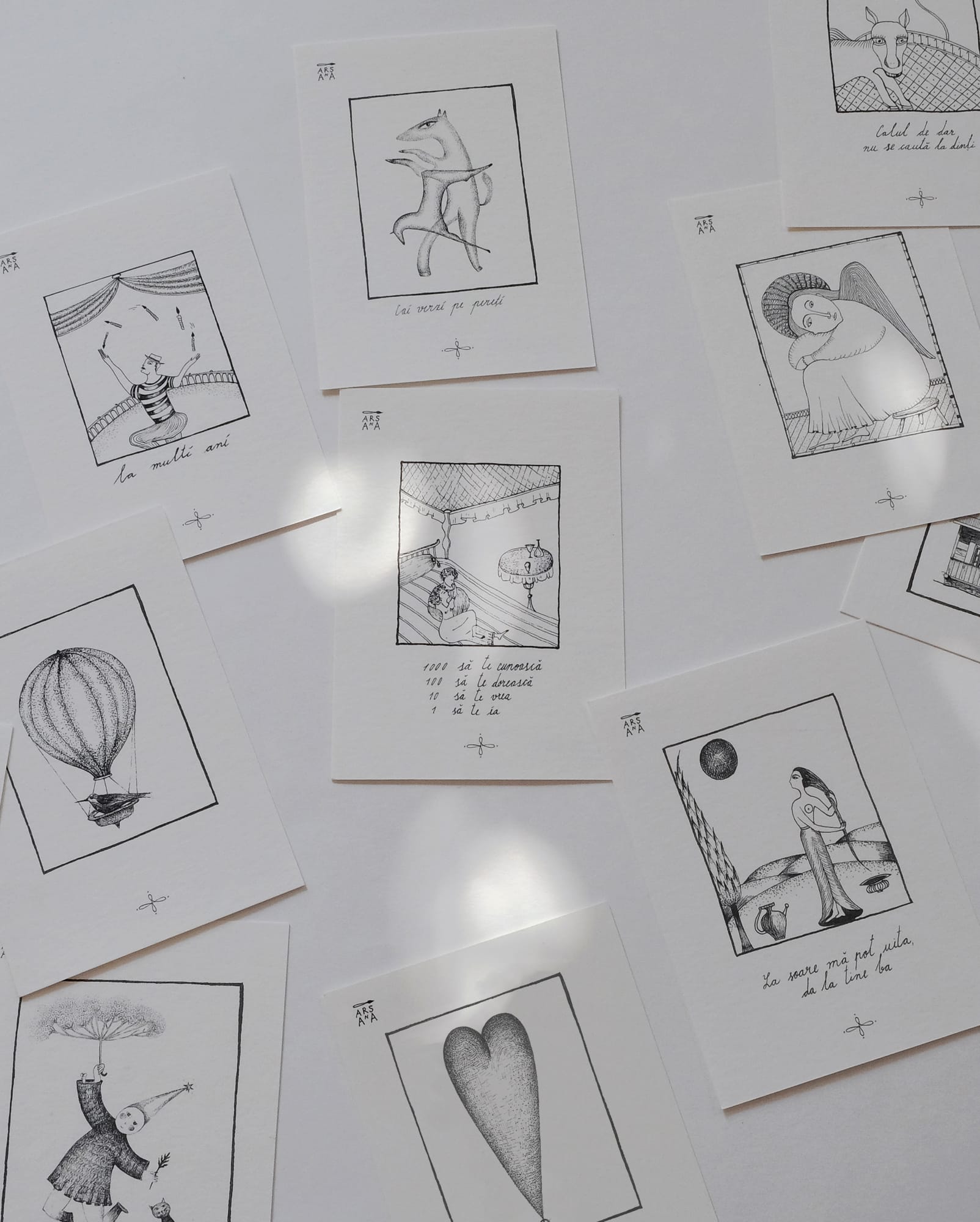
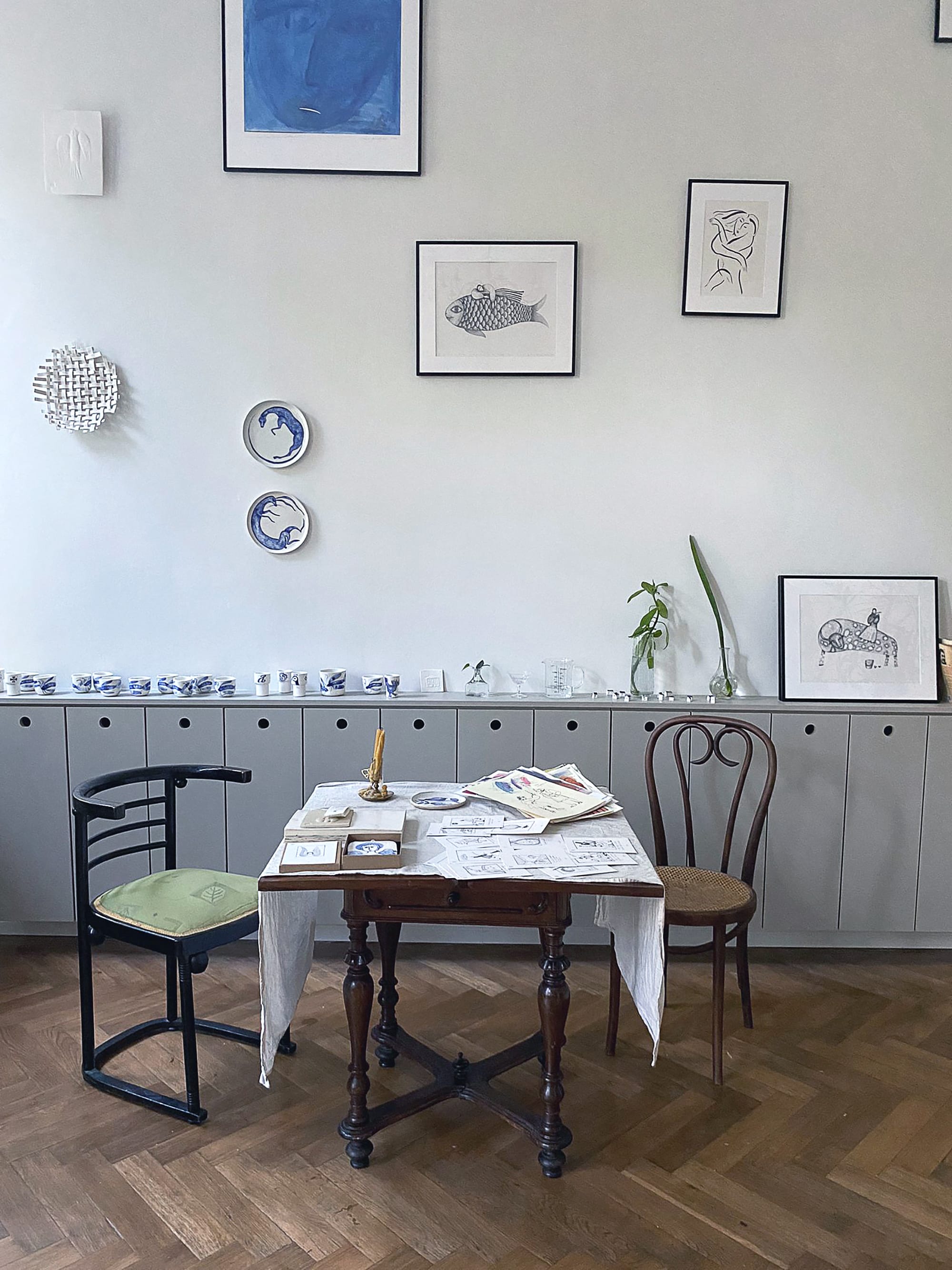
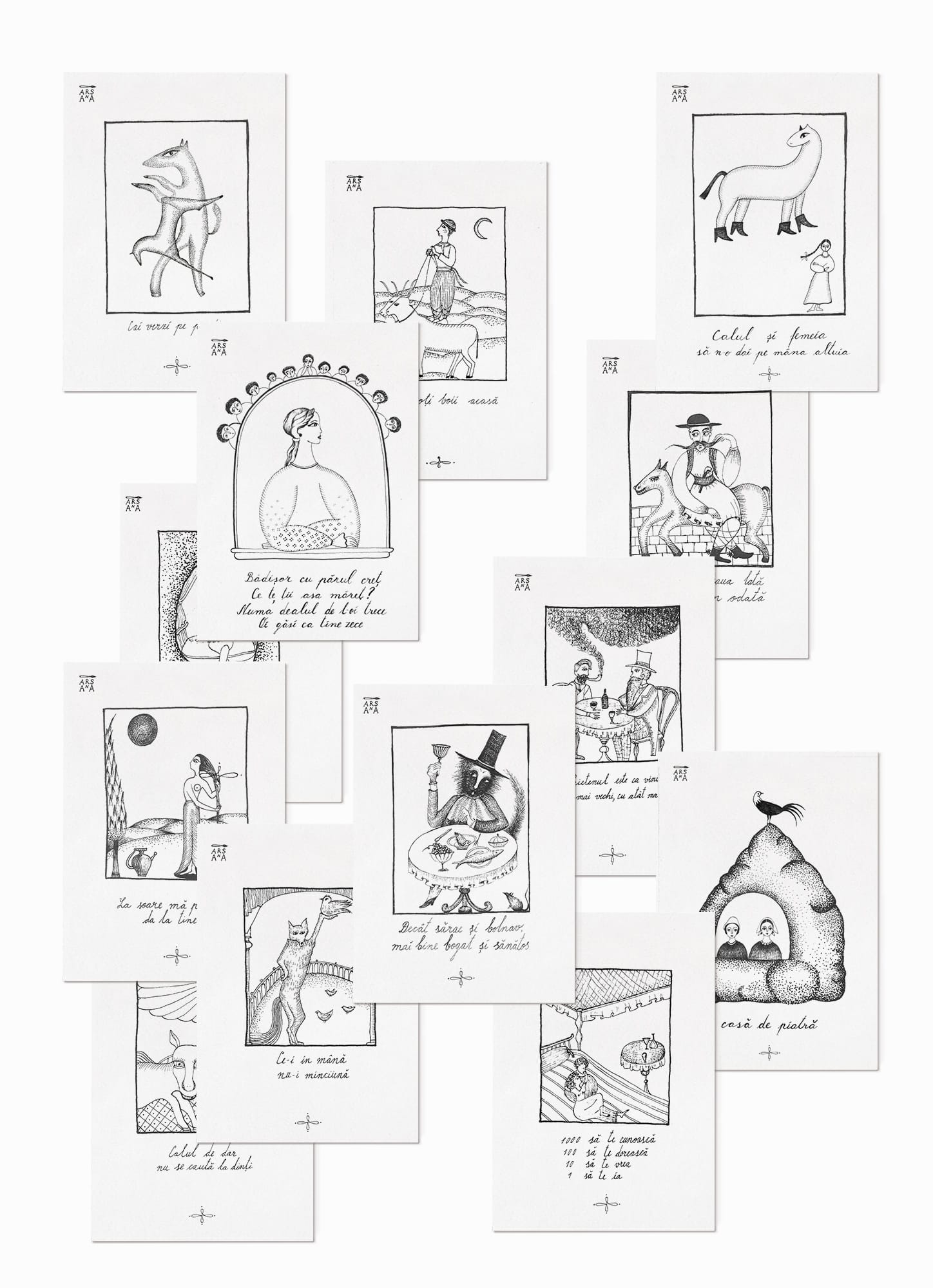
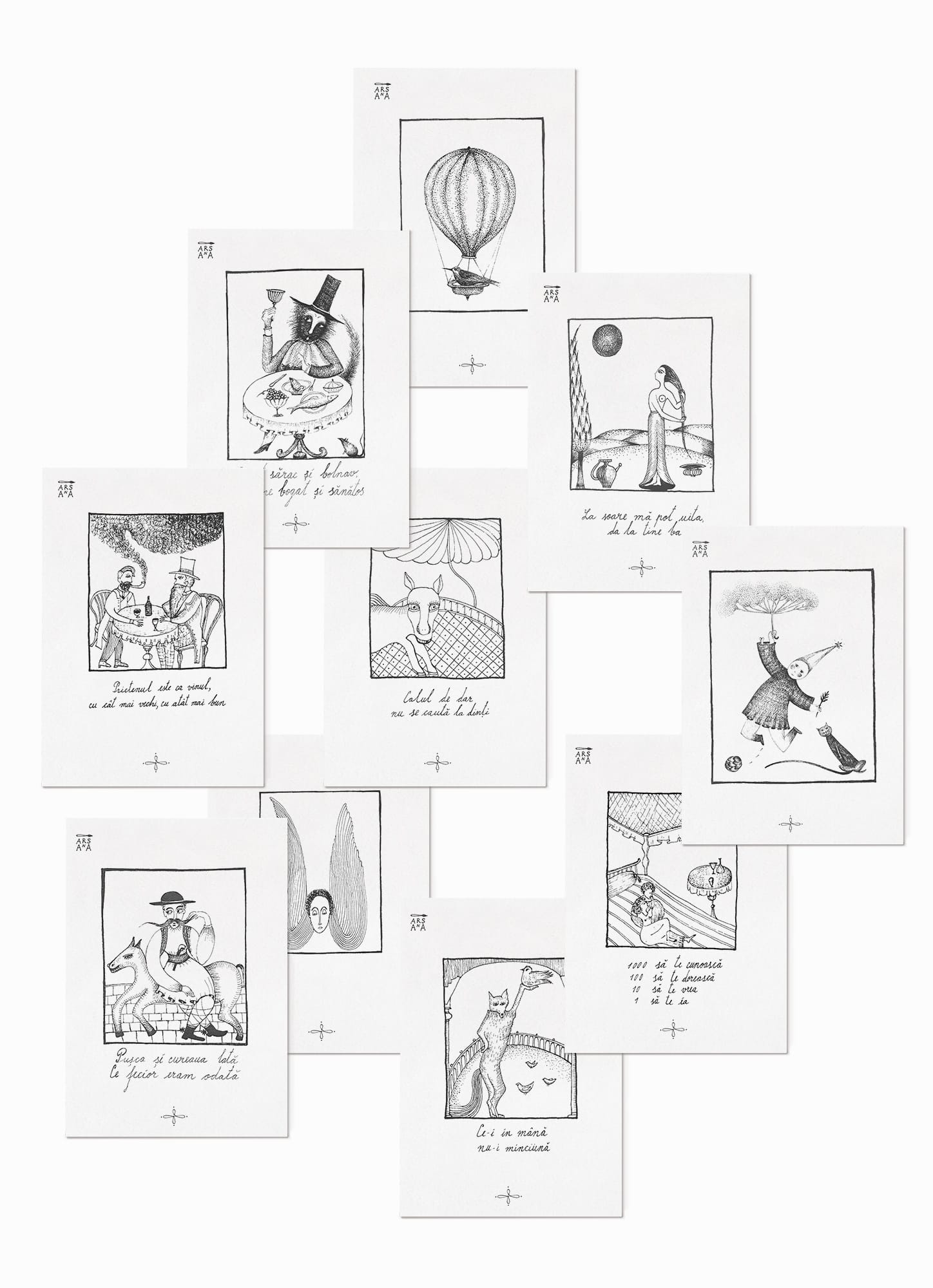
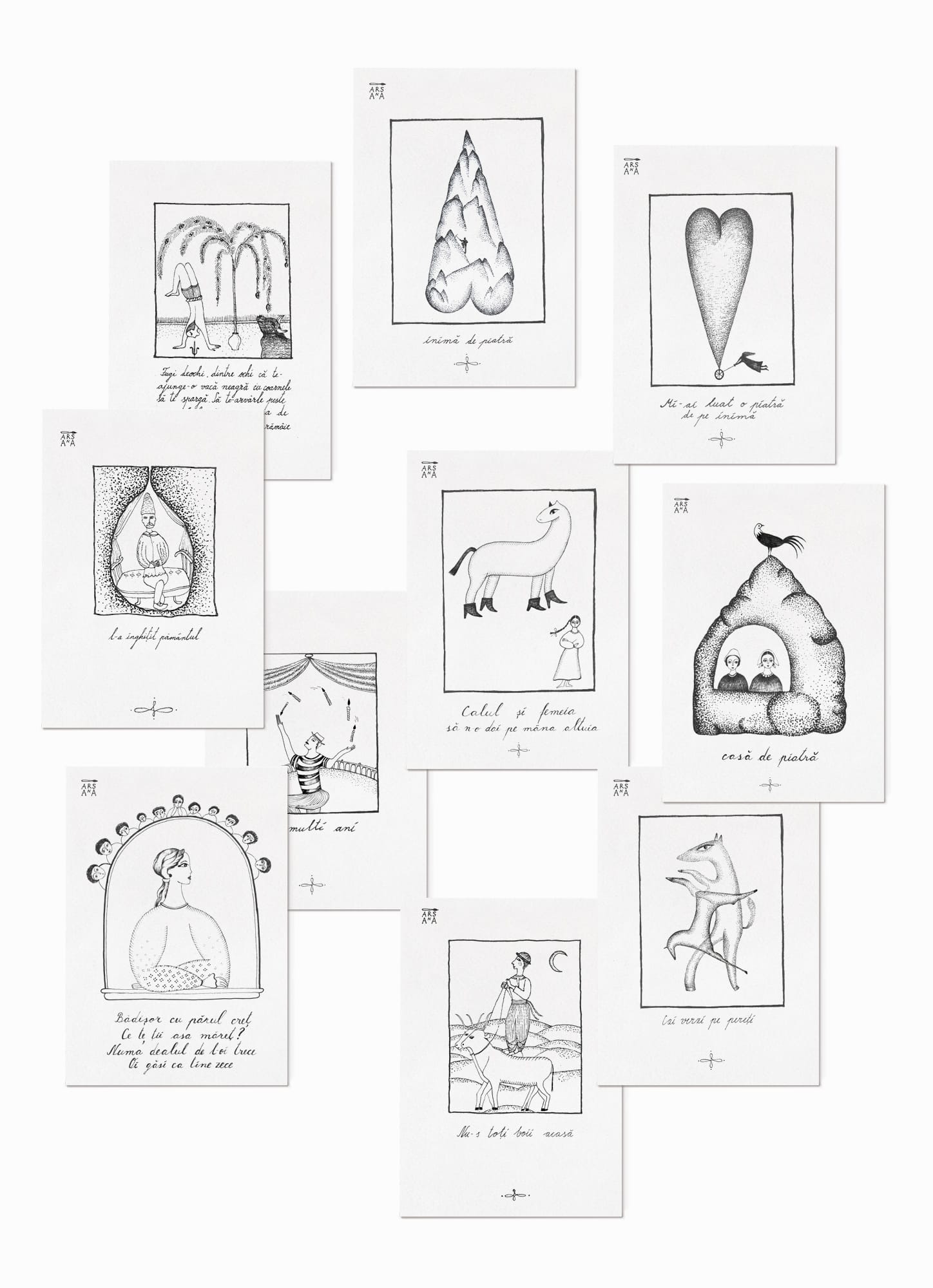
It bears a resemblance to a written book, whose significance becomes apparent only when it reaches its intended reader. These two make sense together; the communication takes place between me, the creator, and the man-perceiver who reads this expression, which is not mine but ours; it is in the interstice between us, or so I wish it to be. This dialogue is different but equally telling through each of the above mediums.
All of these imaginations and memories come together in a collective proto memory that each new century pours out; it lives in each of us. We are the postmen of the past who leave letters to those of the future, telling us about ourselves, how we loved, and how we brought joy to the earth. I am one of the transmitters of this human protomemory; my purpose is to bring joy to others through any medium I find interesting.
Ceramics produce a special, unique, and, as I like to say, immortal object. He seeks to beautify the home and life because pottery made in workshops is not utilitarian in nature; factories respond to our functional needs. In the workshops, objects are made with soul; the artist is completely dedicated to each individual object; each one is touched, cared for, and goes through all the arduous processes that involve two firings, the last one reaching 1240 ᵒ C. An author crafts their object over the course of a month, describing it as a slow process filled with intention and joy. The resulting object is a precious one for people who want unique pieces.
My illustration is in black ink, a minimalist image with traditional and contemporary inserts. I have developed a series of postcards with illustrated Romanian proverbs. It featured a series of illustrations around the events of a human life: love, wedding, anniversary, baptism, and death. I approached the image with a lot of humour, designing it with the intention of conserving Romanian culture's traditional heritage in a modern way.


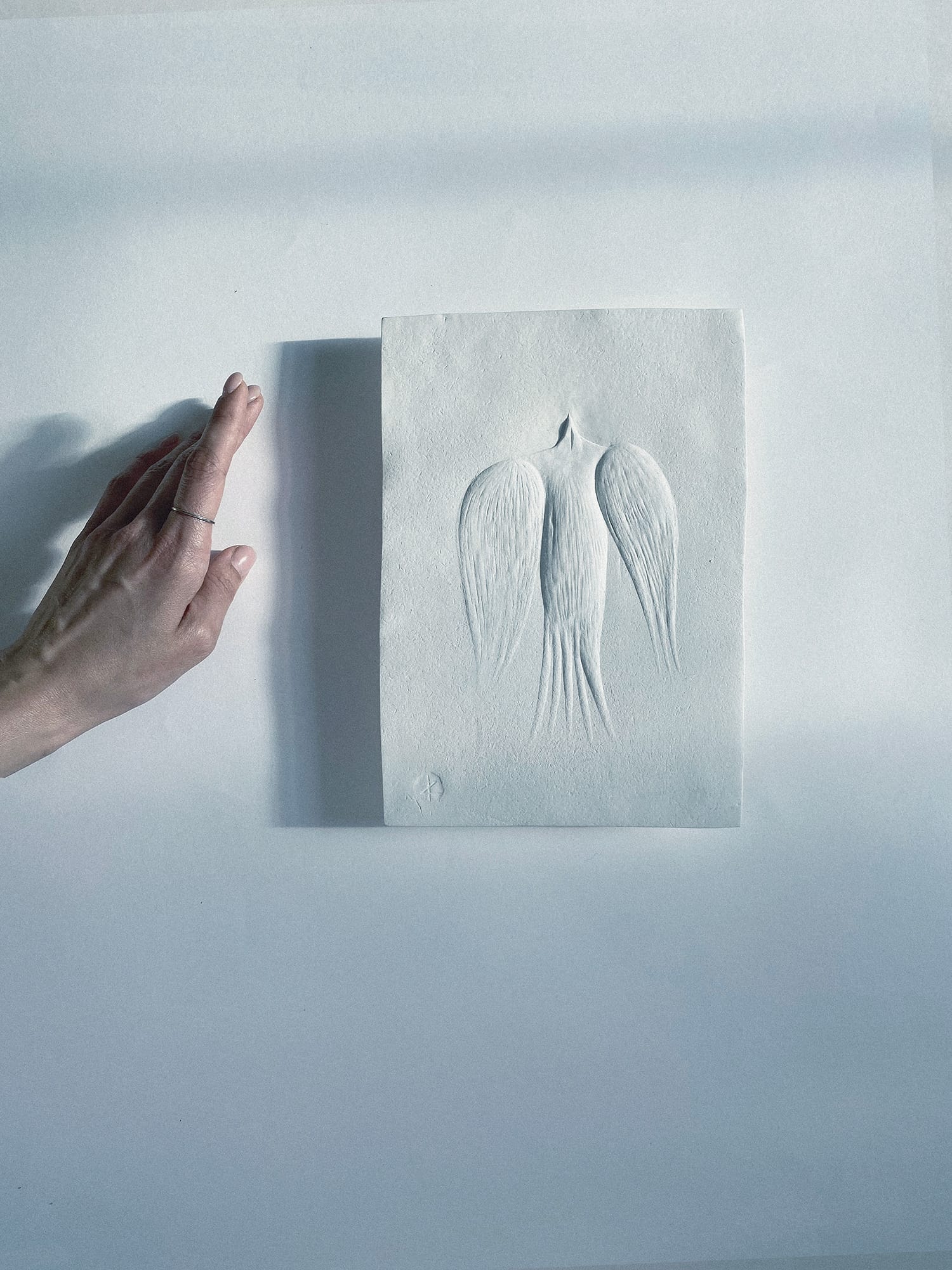
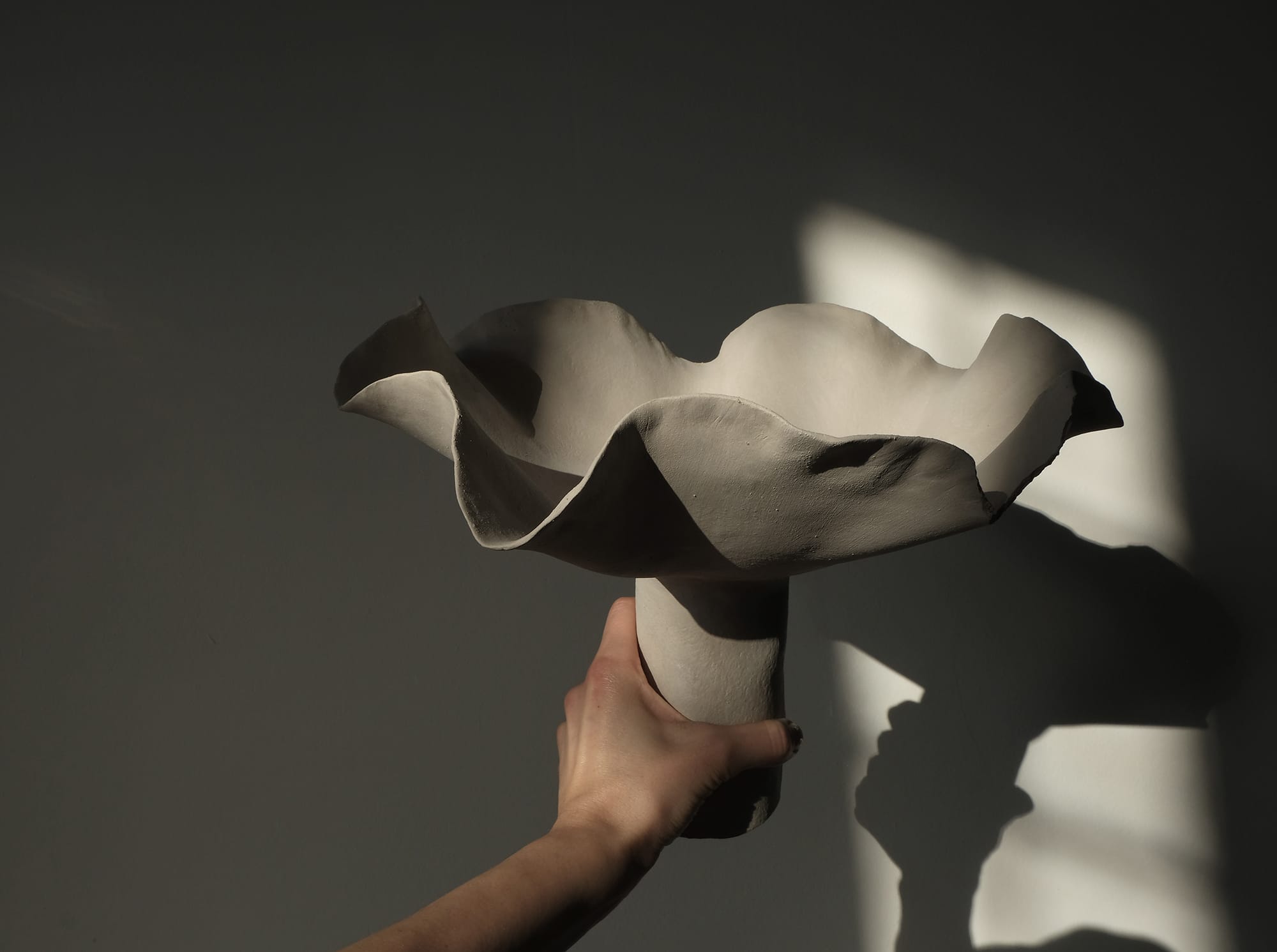

Tell me more about the creative process. I often believe that when singers perform on stage, they go into a sort of trance, letting go of the real world and entering another one where they can be completely themselves. Is this also the case when you are working on a project?
The process itself consists of attempts that you know will fail because you don't have a proposed end point in mind, but you undergo a process to find an answer that surprises you. In this sense, the process involves making assumptions and even searching for errors, such as when an object doesn't make sense or when a form isn't appropriate for its intended purpose.
Attempts without promise are meant to take you (seduce you) from one point to another, from where you are to where you want to be, or to let yourself be carried away, different from where you started and therefore unknown. I follow this bravery. Simultaneously, I hold the belief that a significant portion of my feminine essence stems from this immersion into a timeless state.
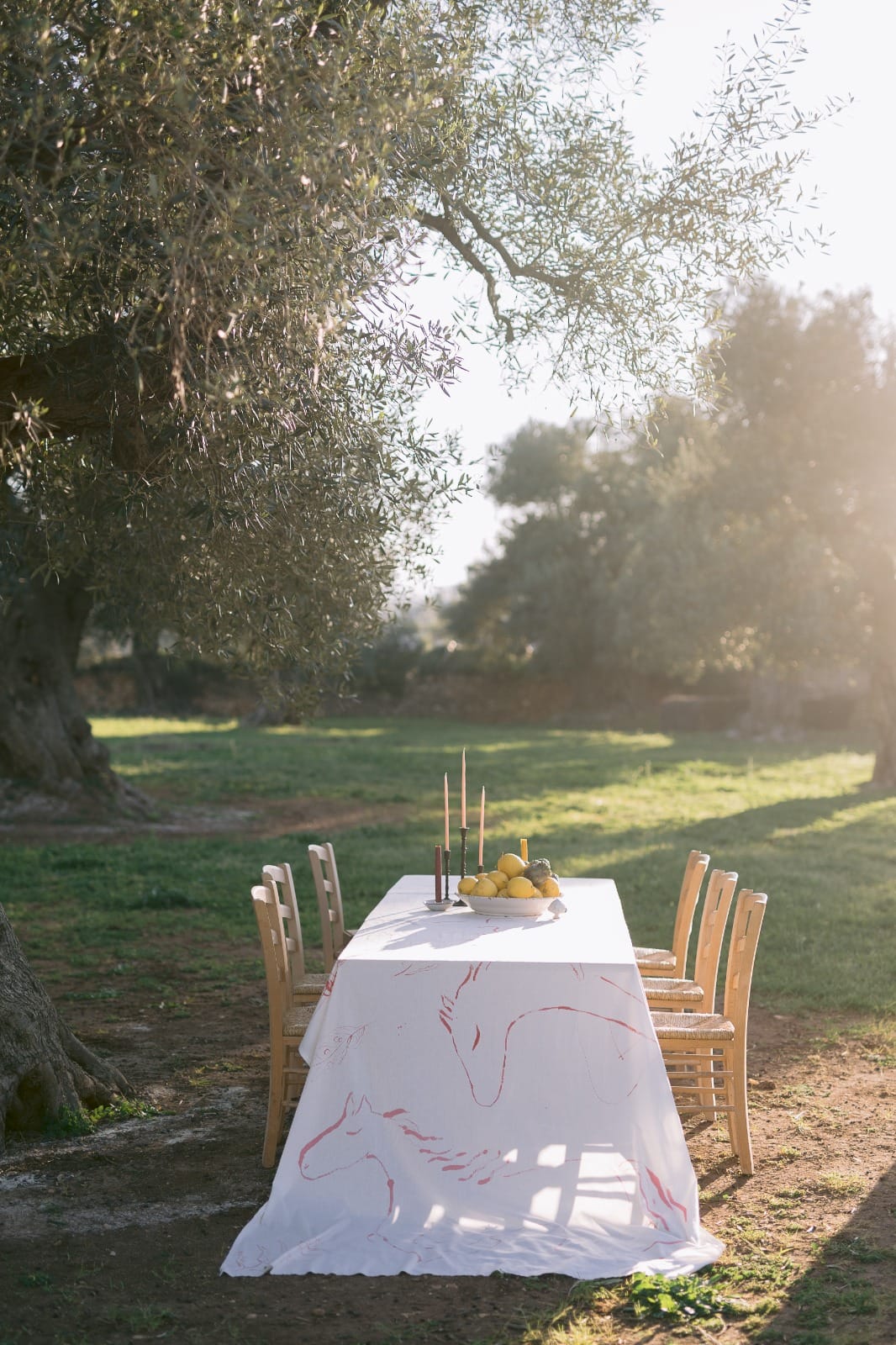
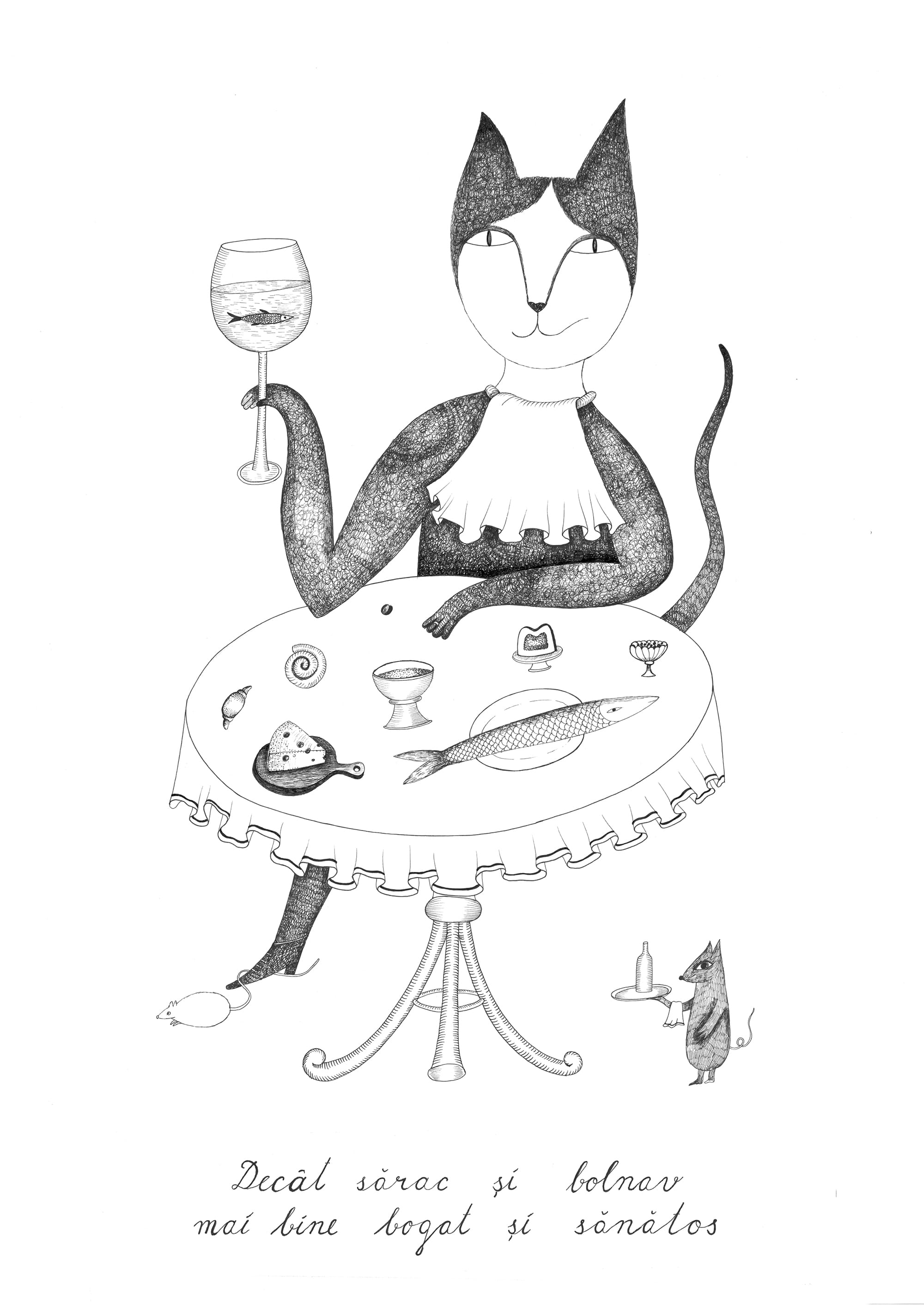
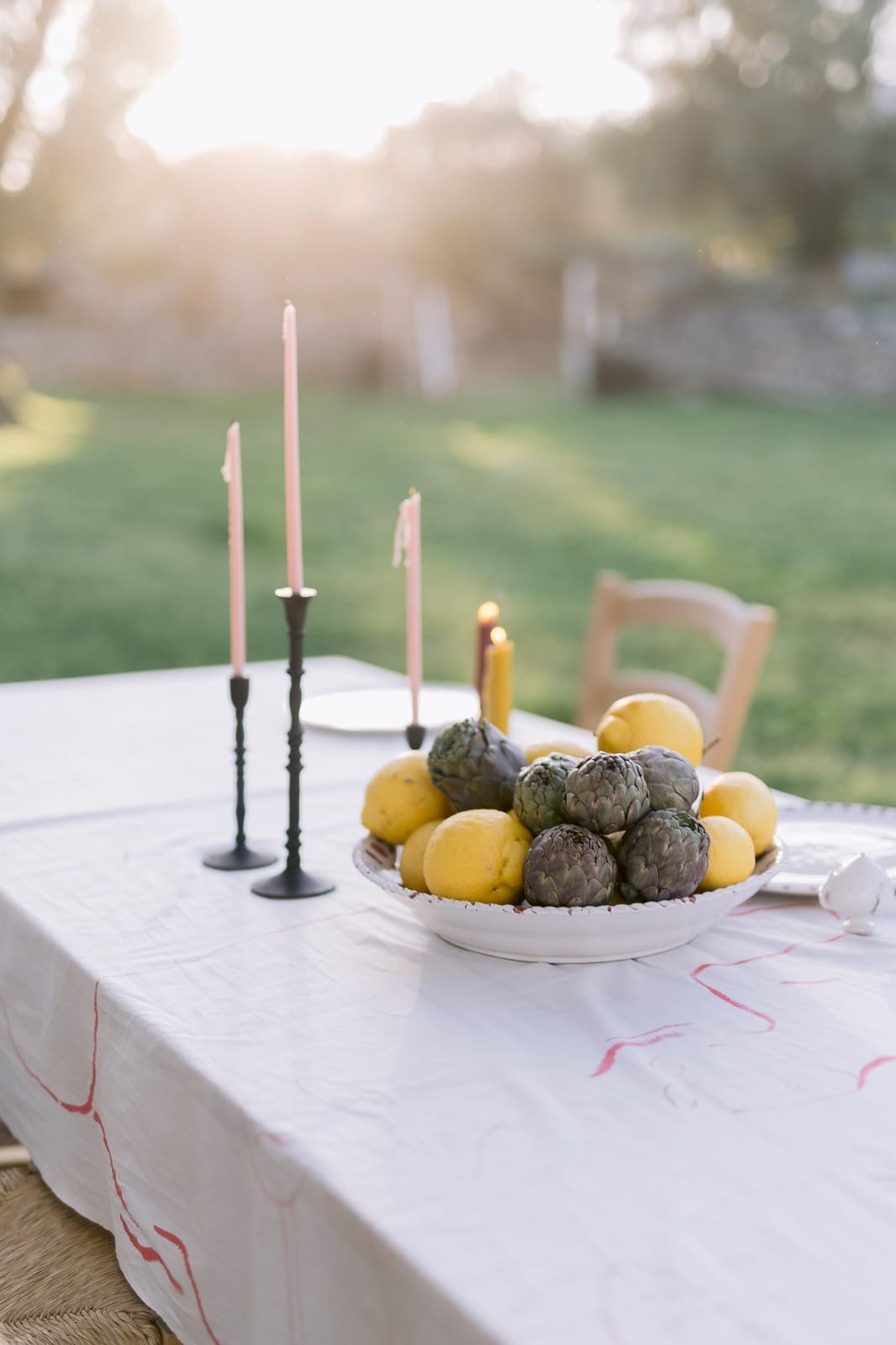
Painting dilutes the outside, elevates every thought to a higher concentration on the canvas, and imbues the creation with a seductive quality that eludes you from the agora.
The urge to recreate the beautiful, the story, and the unreal for the sake of creation and to express something greater than myself as a creator drives this absorption. The painting itself has nothing utilitarian; it speaks to our common soul. For me, they are childhood memories, either the smell of winter, the feeling of a summer breeze, the whistling of the train, the invention of the wheel, the Neolithic frescoes in the caves, the war, a Beethoven sonata, my lover from one summer, or the memory of my mother when she was nursing me.
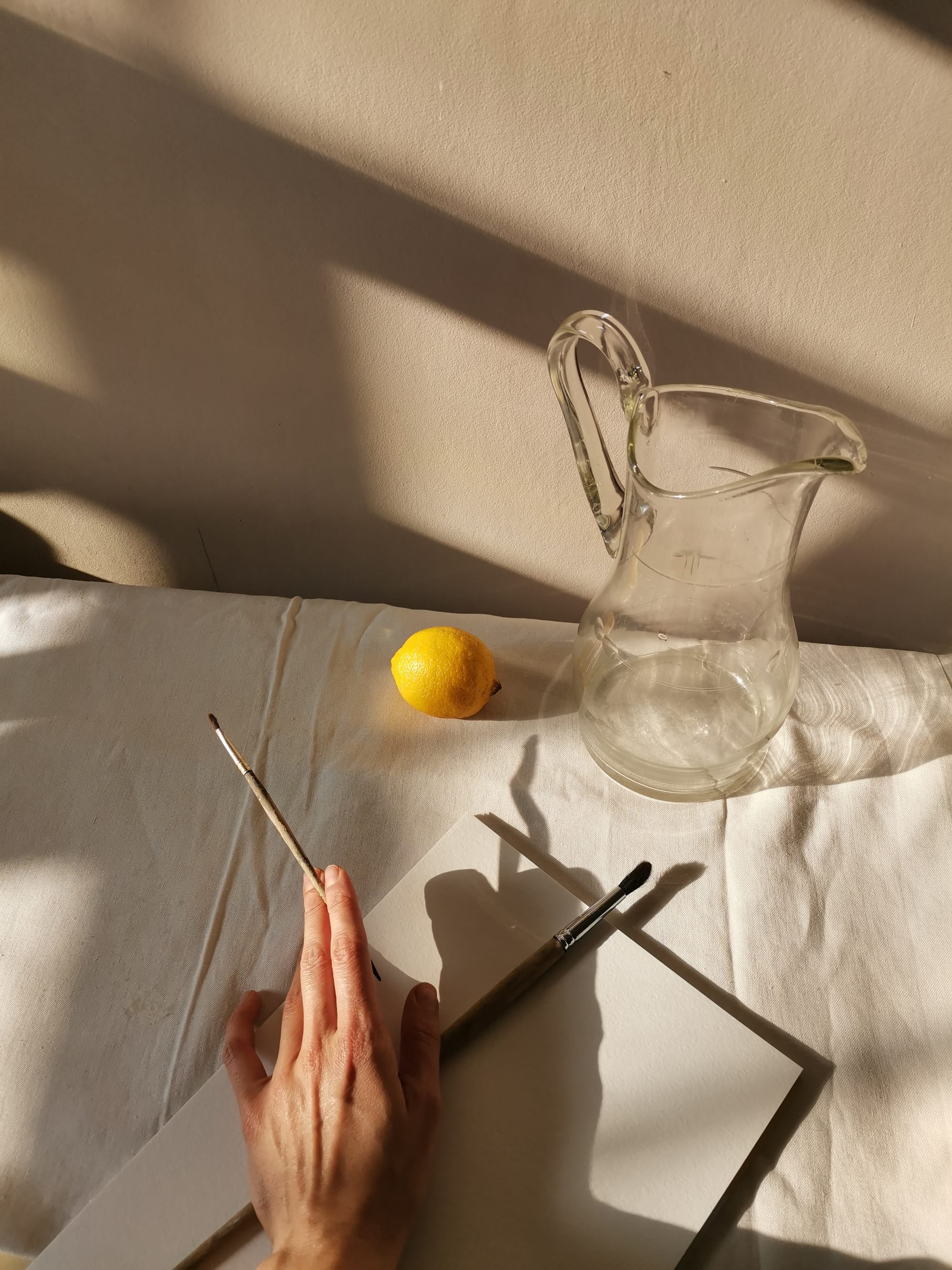
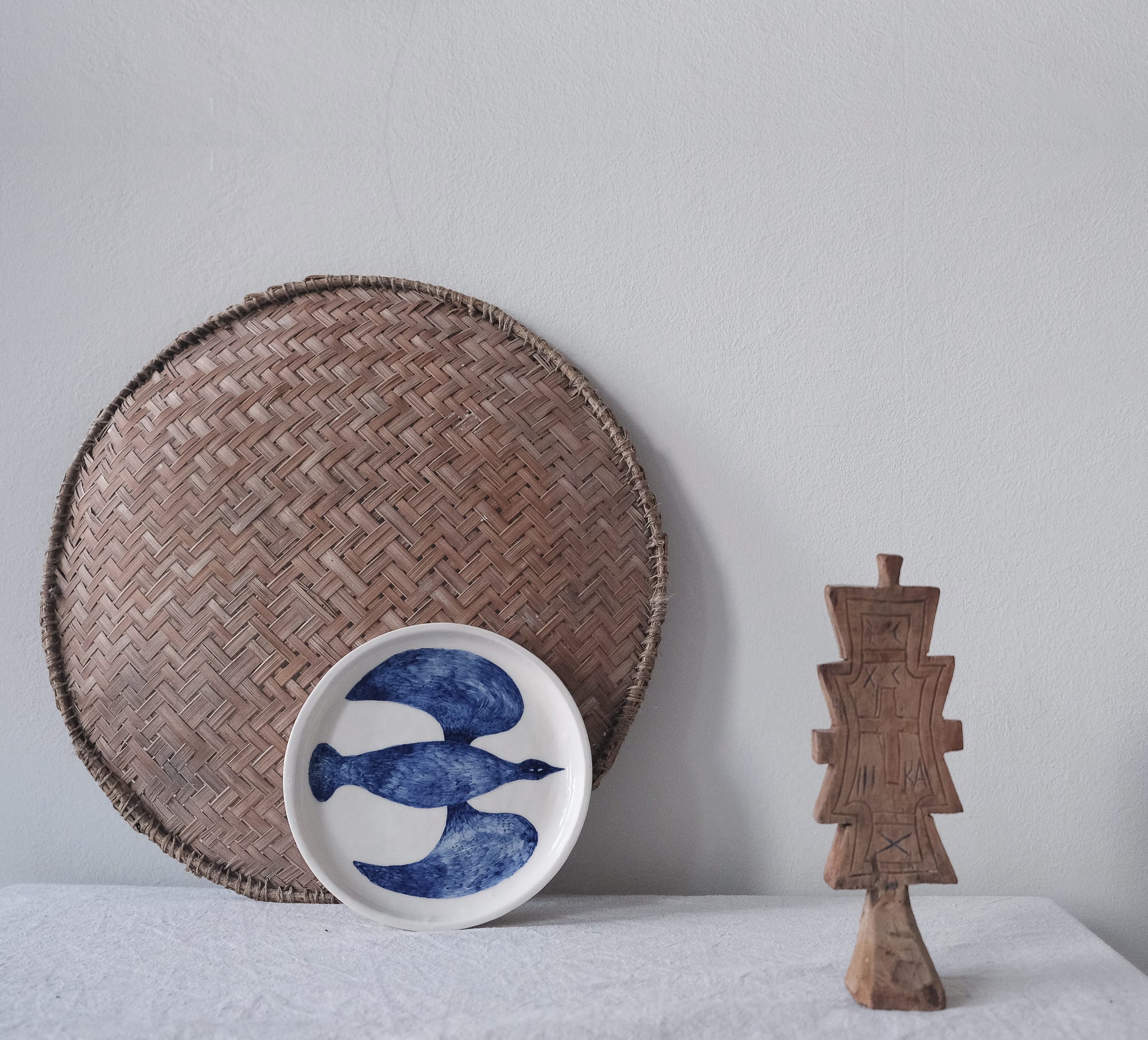
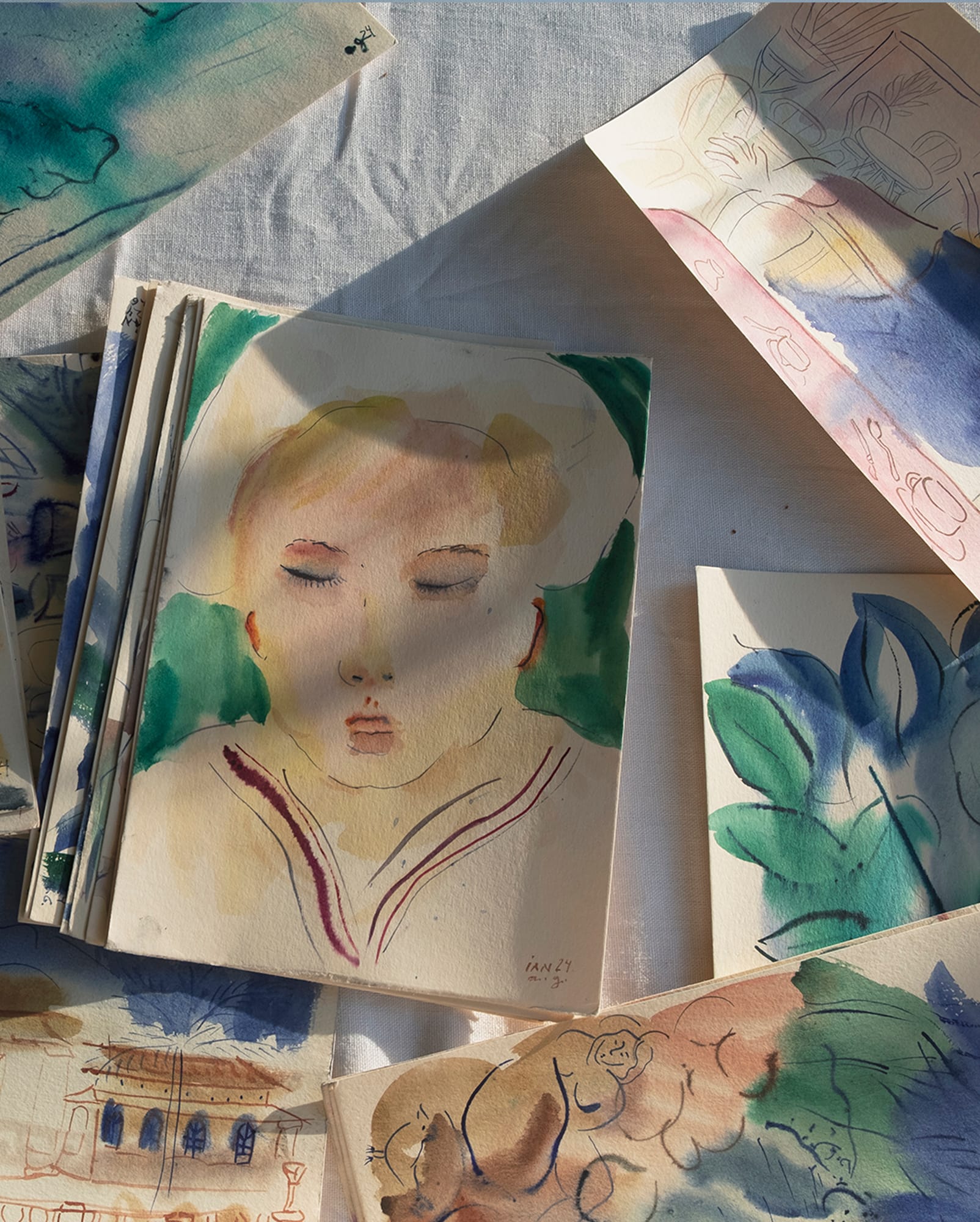
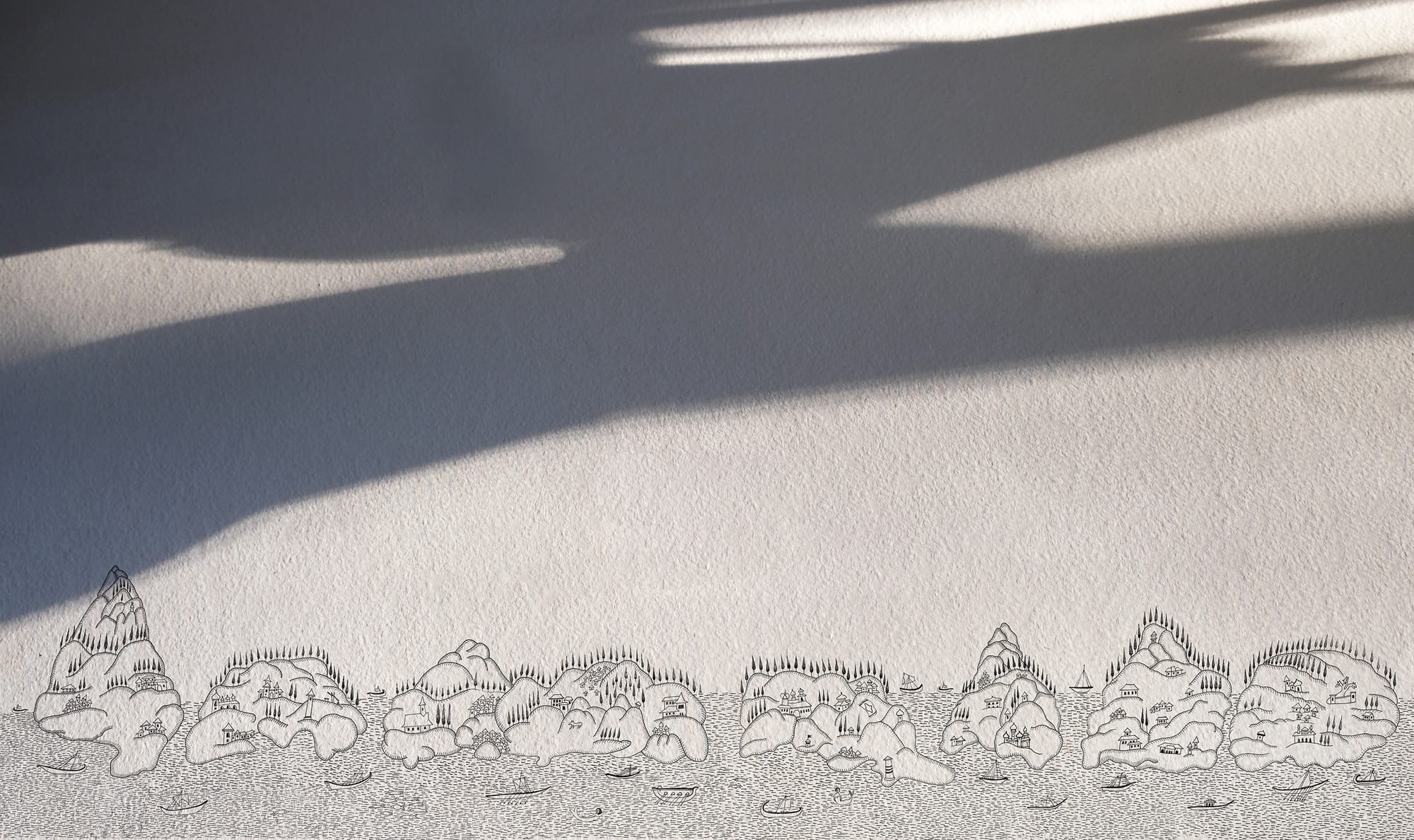
In addition, you organize group workshops and live painting events. Please elaborate.
I like experimenting; it's the luxury I started as a small workshop. All trials are experiments; they are mistakes; they are lessons. Life events are a formula for sharing what I know, a formula for interacting with others; they're about relationships, joy, and community.
I would like to learn more about your collection of porcelain rings. Do you intend to pursue a similar project again?
Porcelain rings began as a seal object, an observable object, and an ornament, each with a unique imprint. It is a statement piece. Indeed, my intention is to persist, expand the ring collection, and promote it globally. I'm even thinking of distributing to a few shops in Europe. I am excited to colour the next series in a primary pigment palette of blue, yellow, and red, complemented by colloidal gold lustre and platinum.
The problem with these objects is that each finger is different, and I can't size them to order, especially considering the shrinkage between 11 and 14% when burning, which again adds a margin of unpredictability. Only a person who tries it on can take ownership of the object.
However, starting with a handful of clay and knowing it can become anything is amazing. For me, the fascination with pure matter, which transforms into something else in the hands of a maker, exemplifies our human empowerment through the gift of intention. To me, the earth symbolises the raw material from which we originated and the source of our future evolution. For me, the ring is a symbol of wearing a piece of this earth.
What are your sources of inspiration? Do you have any muses?
The period at the turn of the 19th and 20th centuries is the one I look at most often. I'm referring to expressionists, impressionists, and the leading artists of that period.
The painter I relate to the most is Marc Chagal, a long-lived Russian who not only reinterpreted Paris and his native land but also embraced the world of animals and birds. He imagined heavenly creatures and created the most human-like horses people have ever seen. I am equally enamoured with Emil Nolde, a German artist often overlooked by history; Picasso, the master of the oxen; and Matisse, who elevated the sketch to the ultimate exaltation of feminine beauty.
I believe that all these artists delicately balance abstraction, the dream, and their formula to evade the real, a transcendence of the human condition unique to great souls who share insights about interiority, pain, suffering, and true living.
This is the achievement of the greats, from whom I aim to learn by dissecting their works into fundamental components.
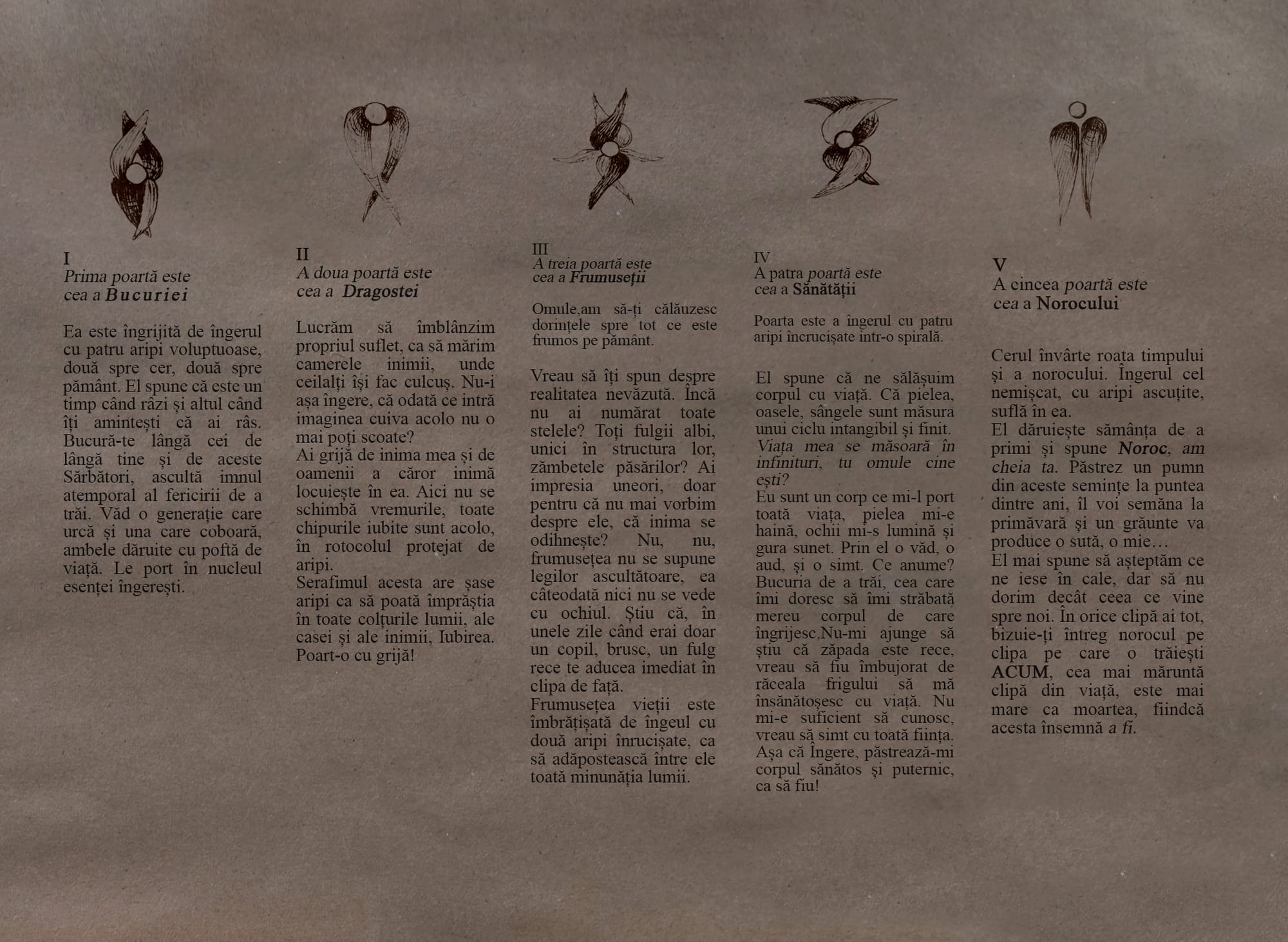
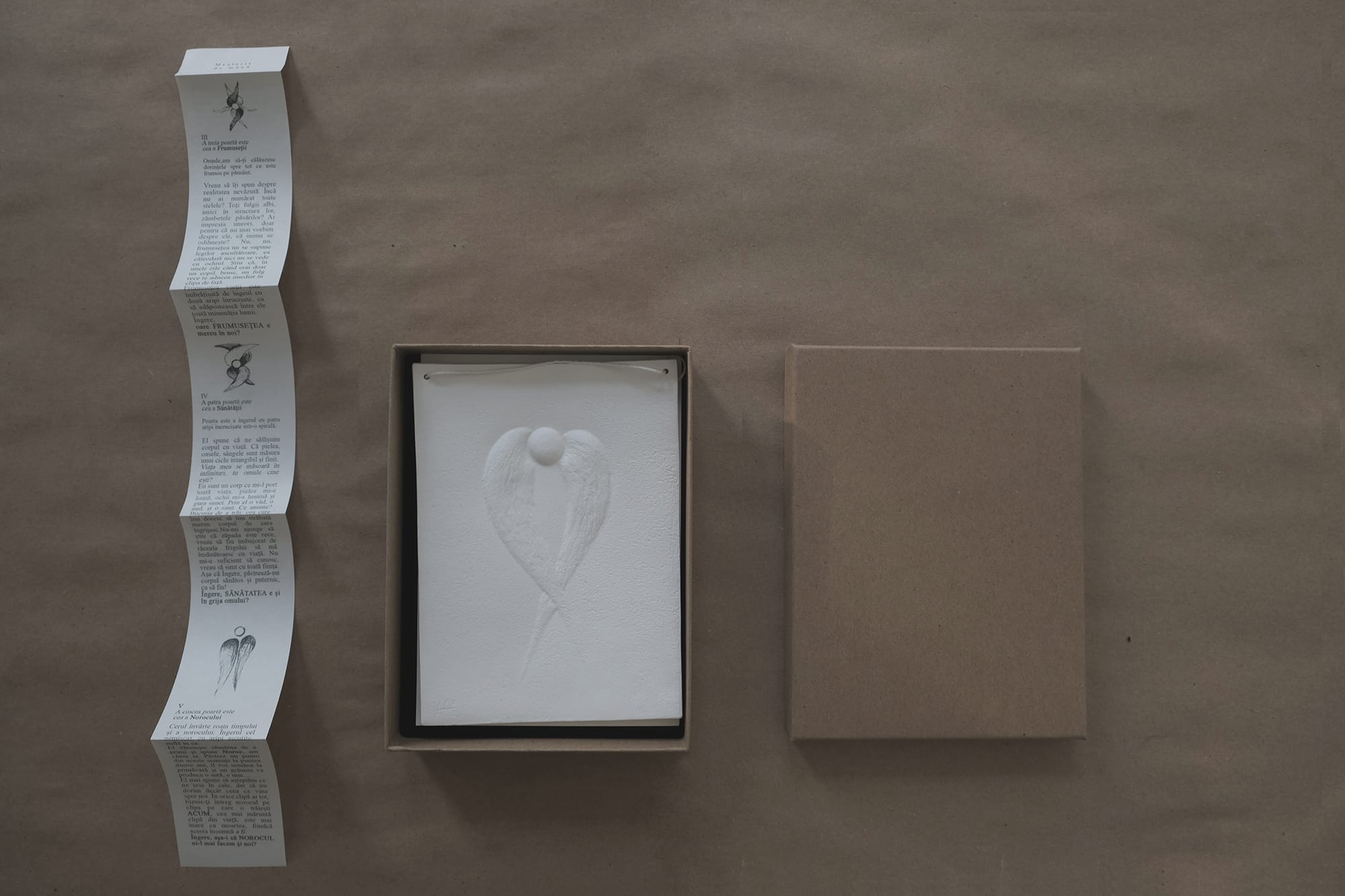
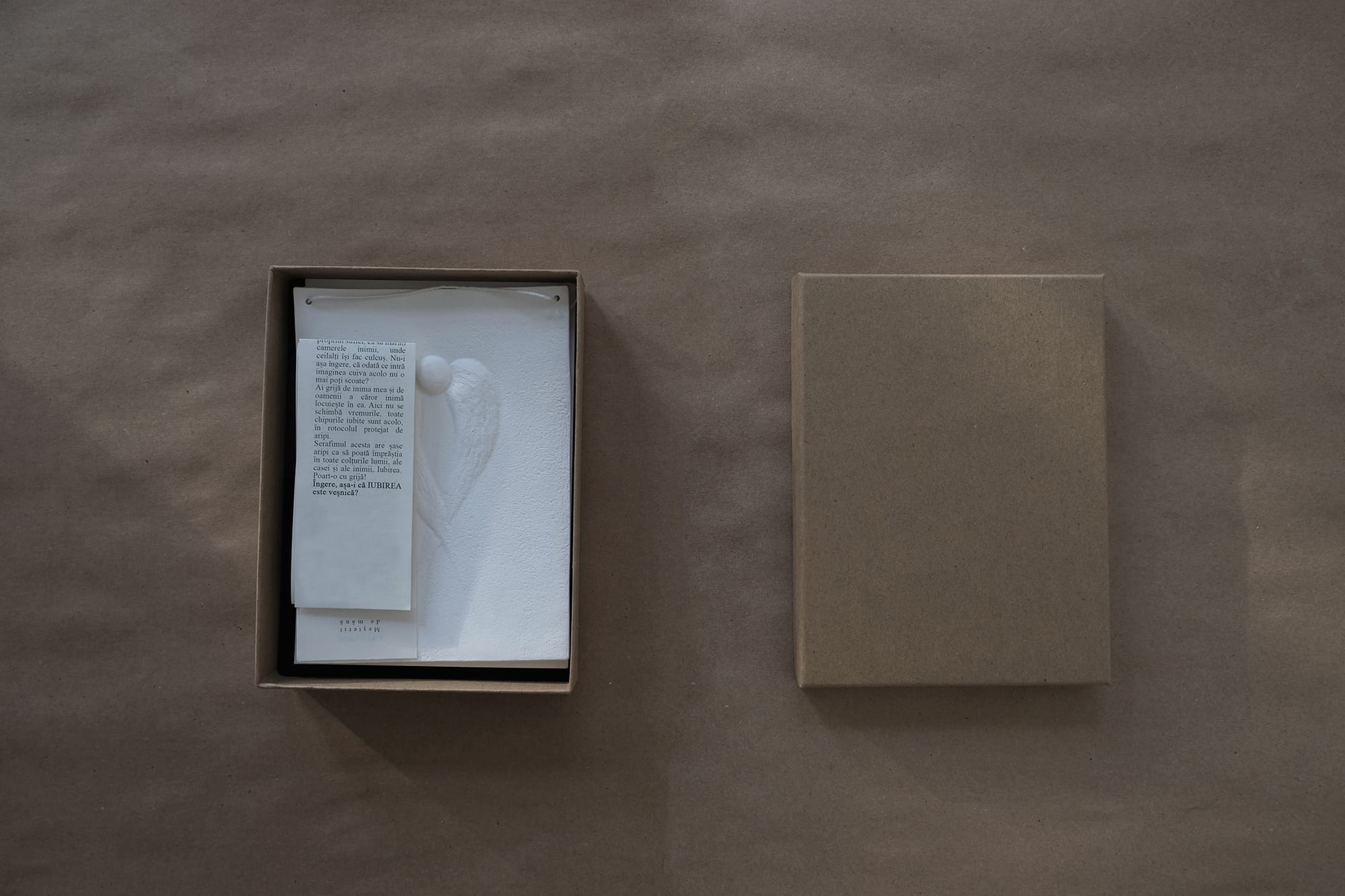

"Details matter. They create depth, and depth creates authenticity." is one of my favourite quotes. What meaning does it have for a complete artist like you?
What a beautiful quote! It's the details that differentiate between a careful and trained eye and a superficial one. By not only believing in details but also recognising and observing them, we uncover the layer of authenticity that elevates the values.
A painting, writing, piece of music, or sculpture does not automatically earn authenticity. In order to separate the valuable from the worthless among a vast array of created artefacts, the work undergoes a morphological triage under the direction of a set of accepted human laws.
Herein lies the great dictionary of details and finesse, which distinguishes between good and less good. I learn about detail by taking apart outstanding works of the past that reveal their authenticity. One can interpret the detail as a reflection of the creator's intent.
Do you ship across all of Europe?
I am optimistic about my prospects; expanding internationally is my next step. Actually, I am now searching to work with shops around Europe; through the model, I work with them in Romania. Additionally, I plan to dispatch goods to Europe via the website.
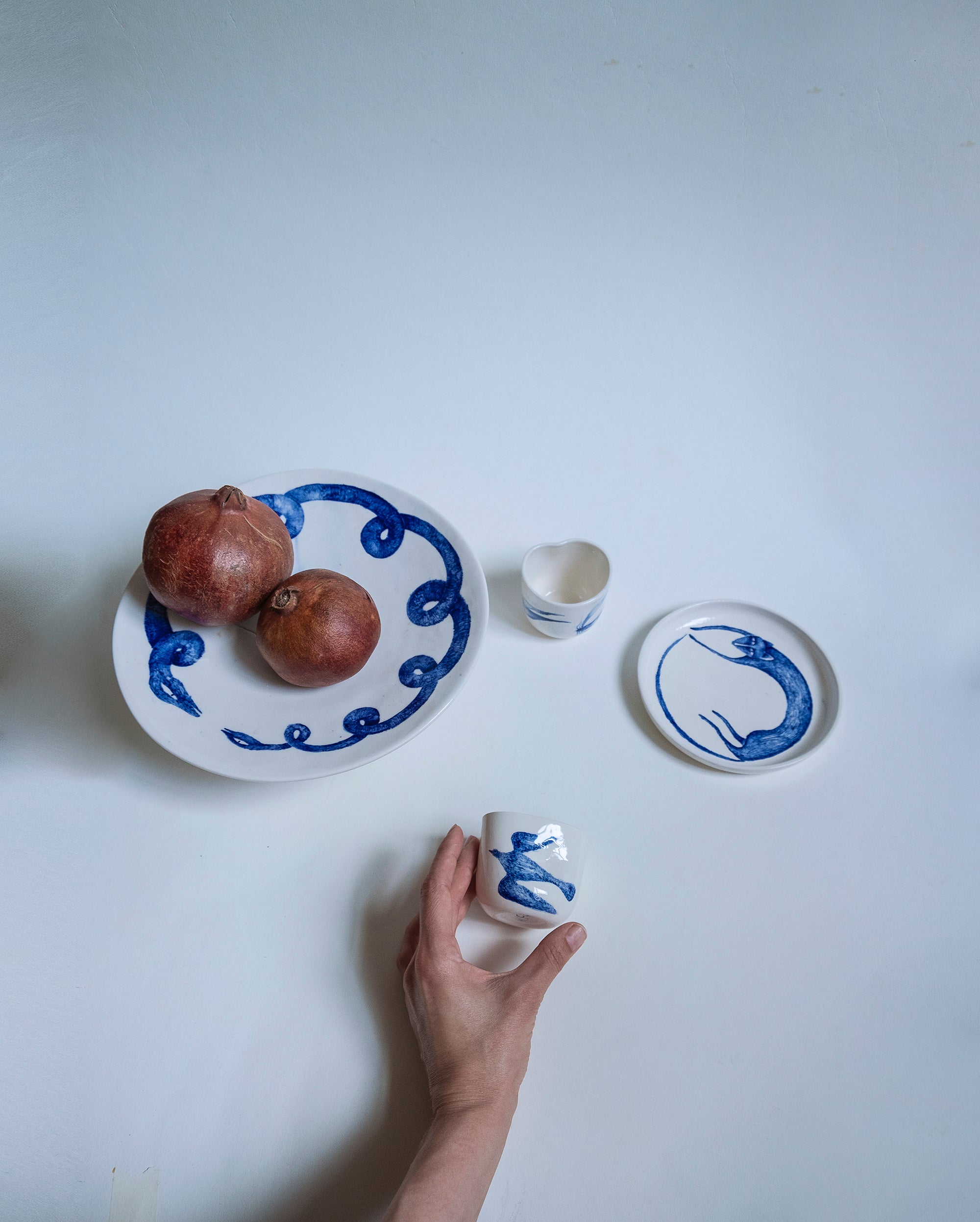
While I was living in Bucharest, Romania, I founded Connecting Women Entrepreneurs, a series of events honouring exceptional Romanian women entrepreneurs. Now I want to turn this into an international community. So, I was wondering if you could recommend any inspirational women.
- ALTRNTV Shop
- Alina Țiplea and Daniela Staicu, Merci Charity Boutique
- Andreea Mitran, Fascicul Visuals
- Iulia Iacob, Zof Retreats
- Irina Moroșanu, Les vacances d'Irina
- Floriana Baltagi
photos: Ana's archive; Felicia Simion, Andreea Mitran, Fascicul Visuals


